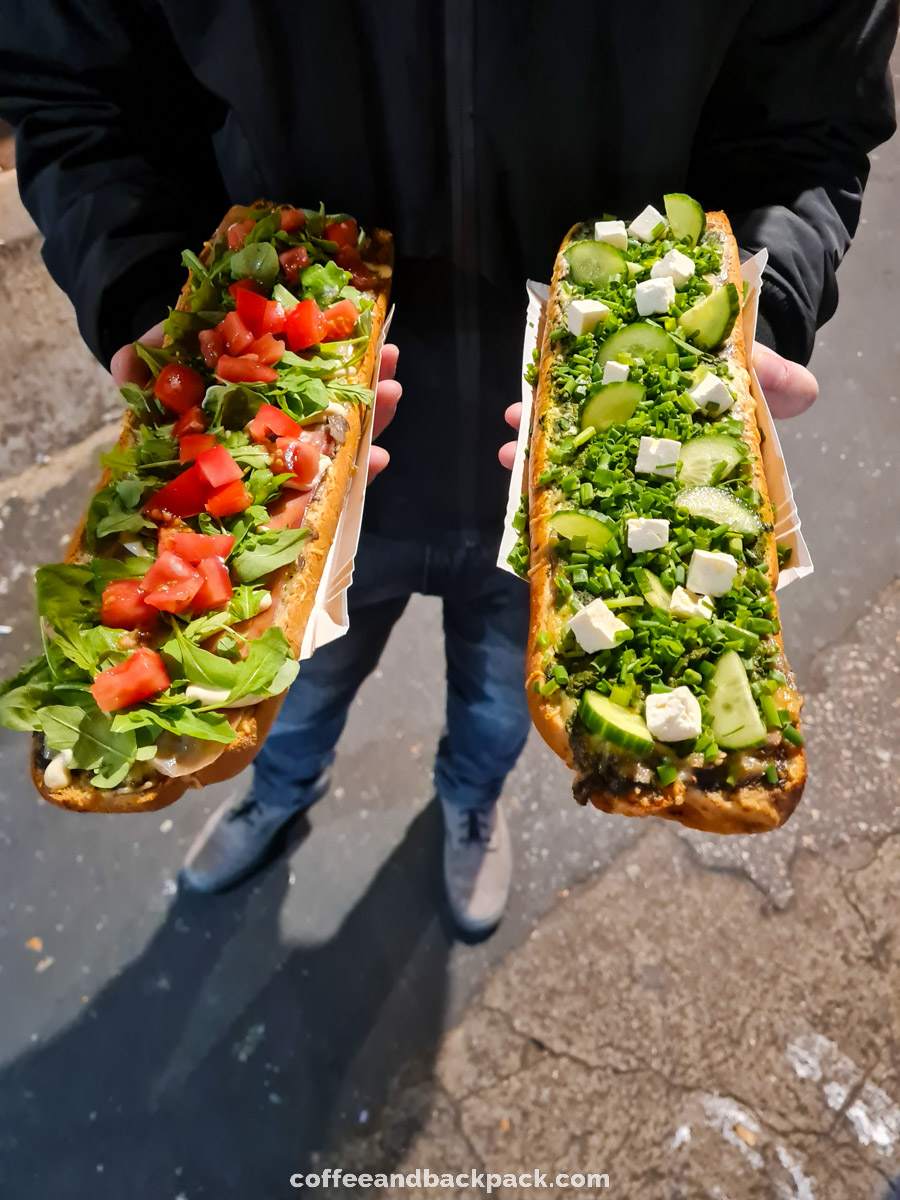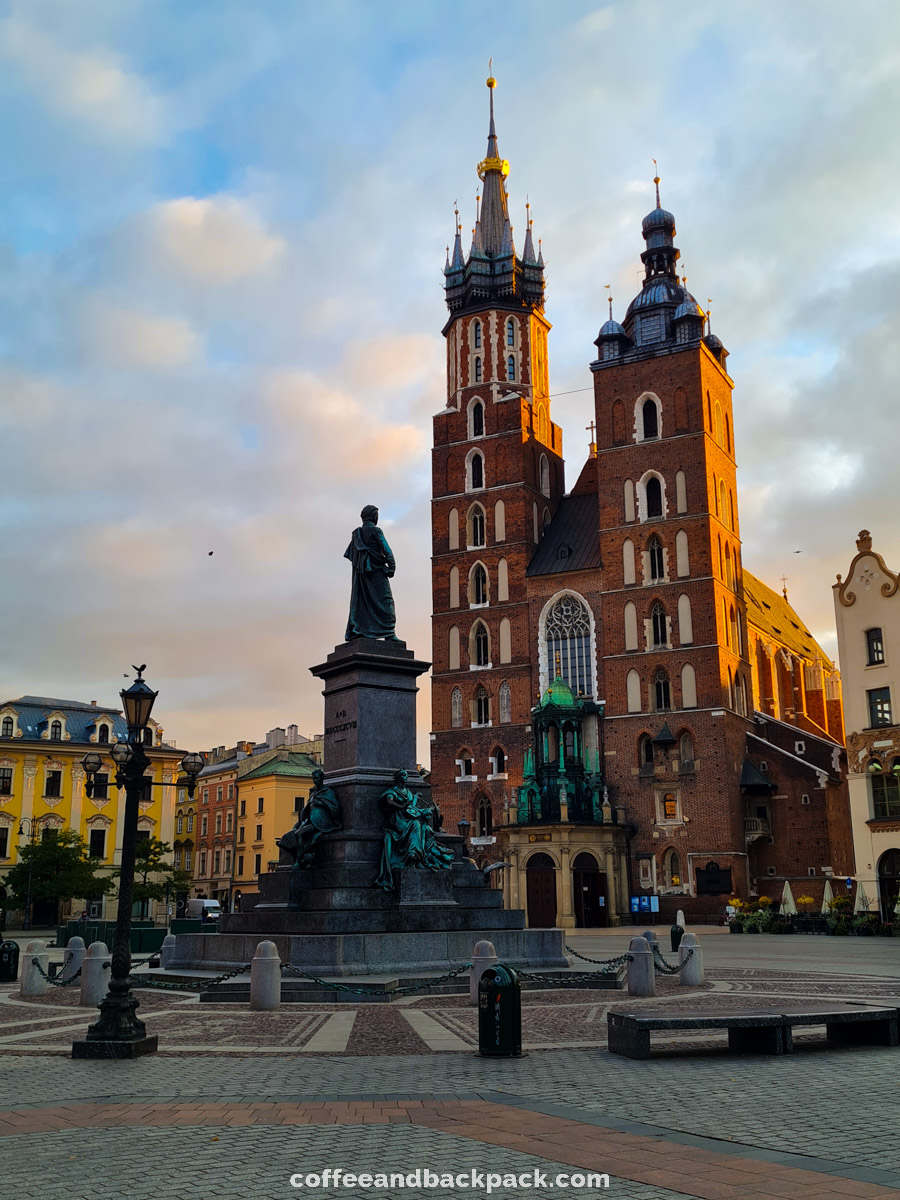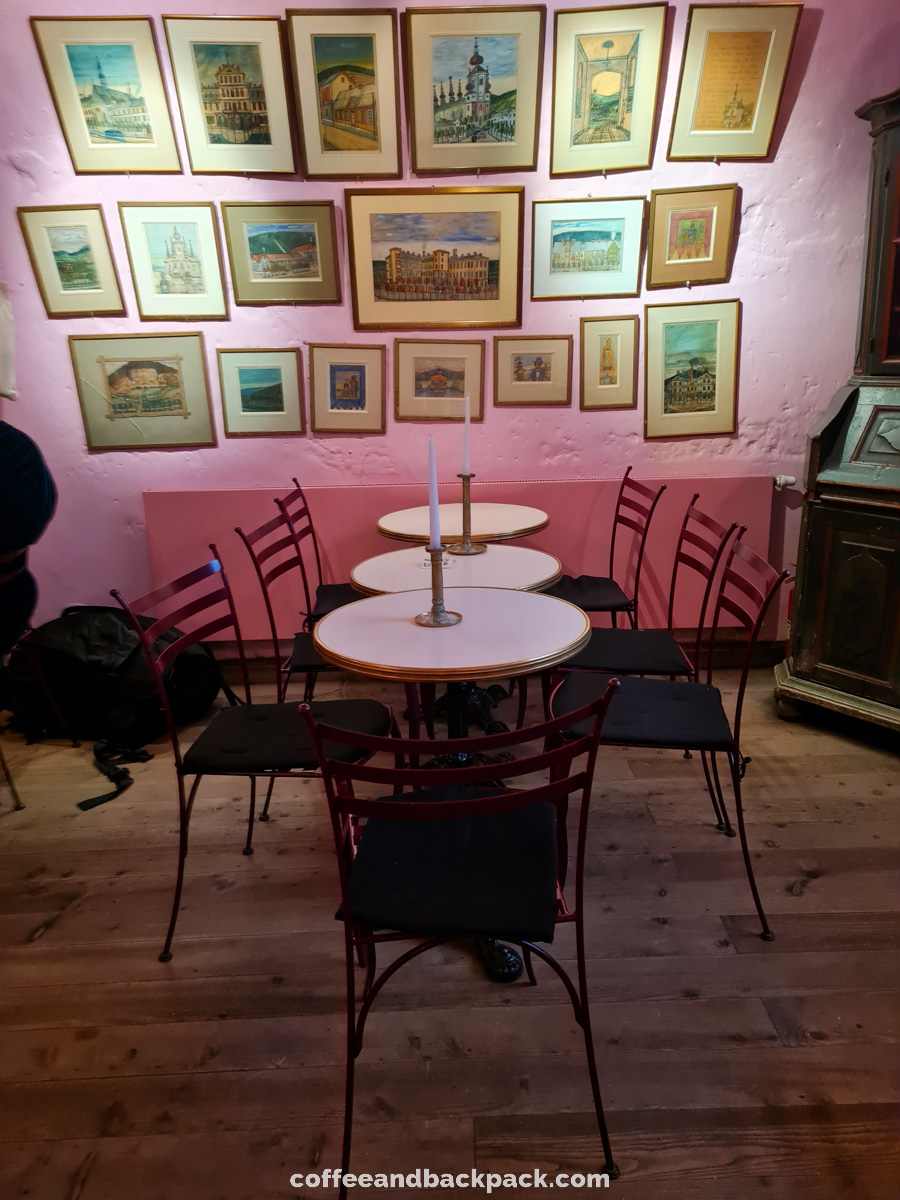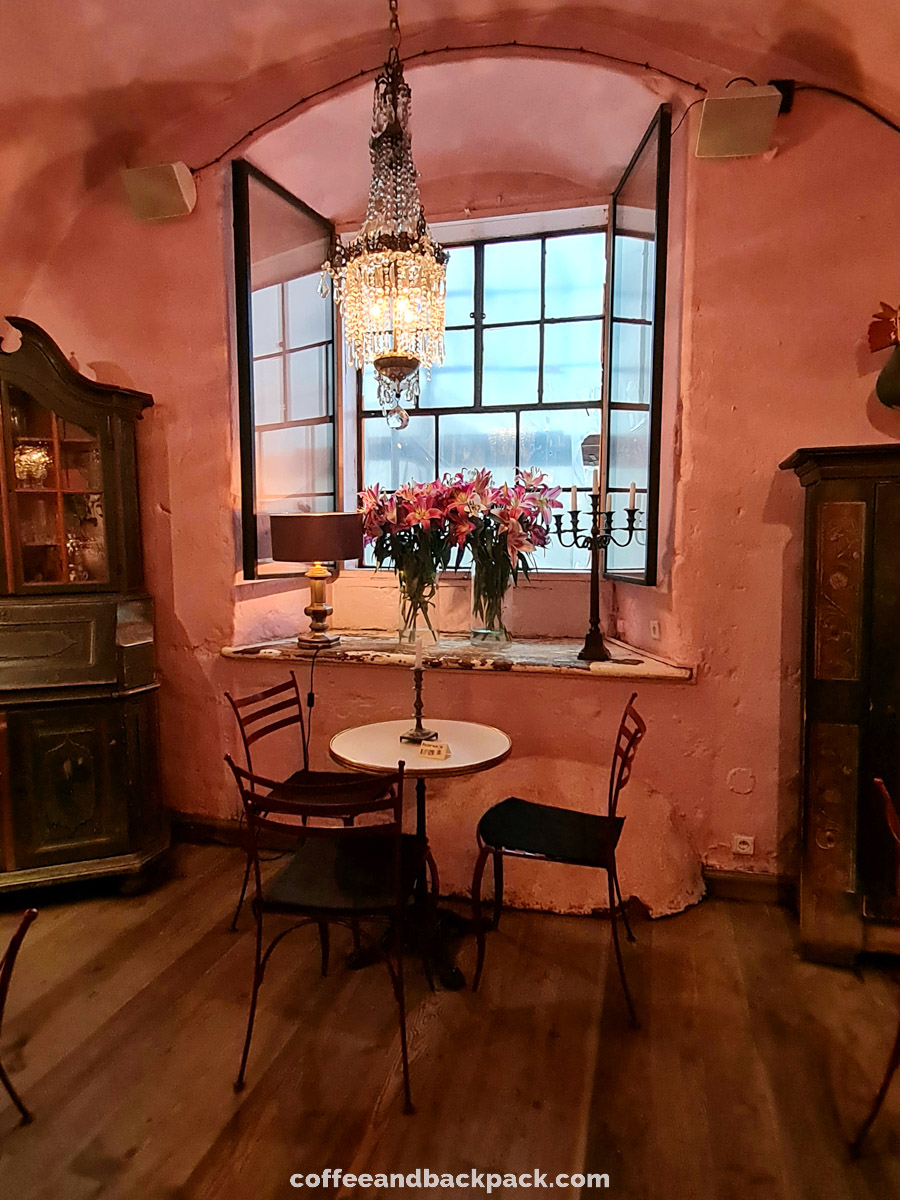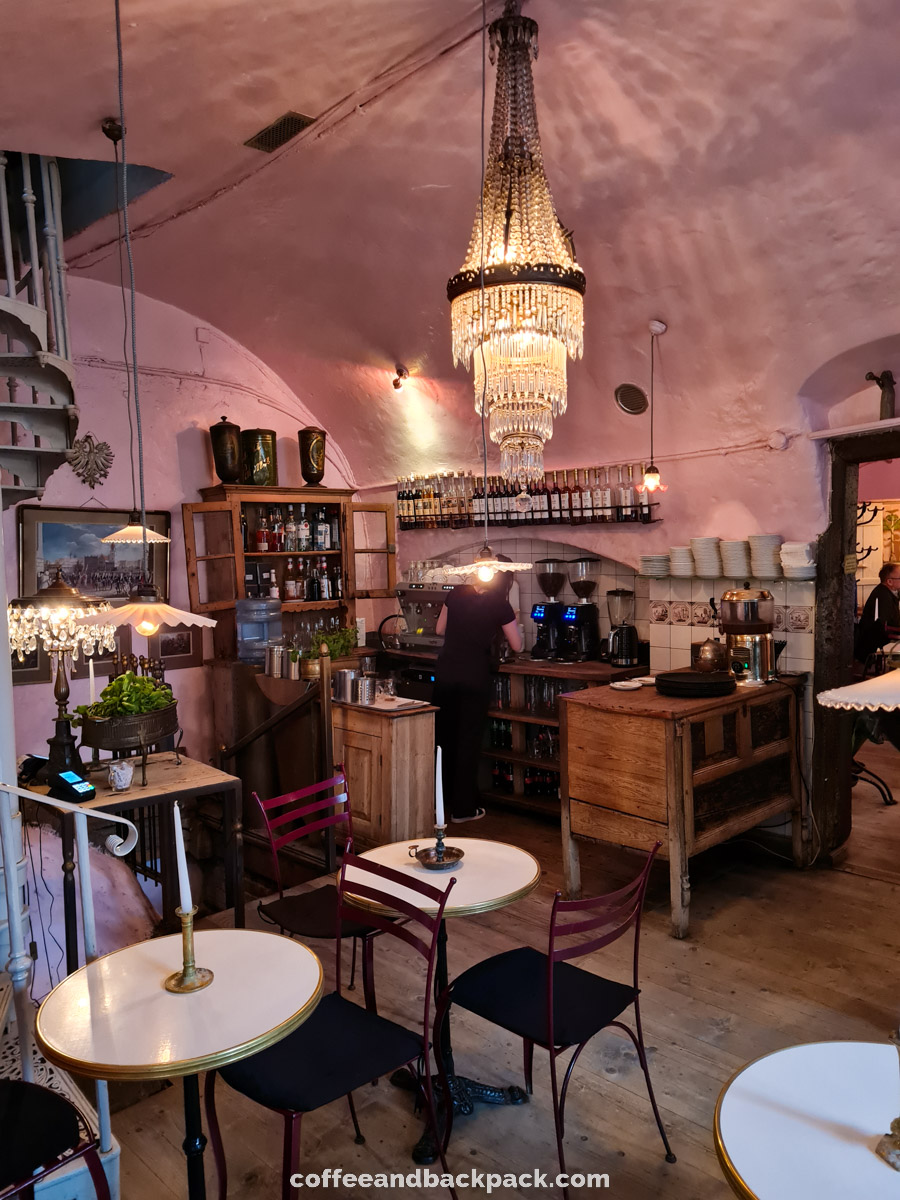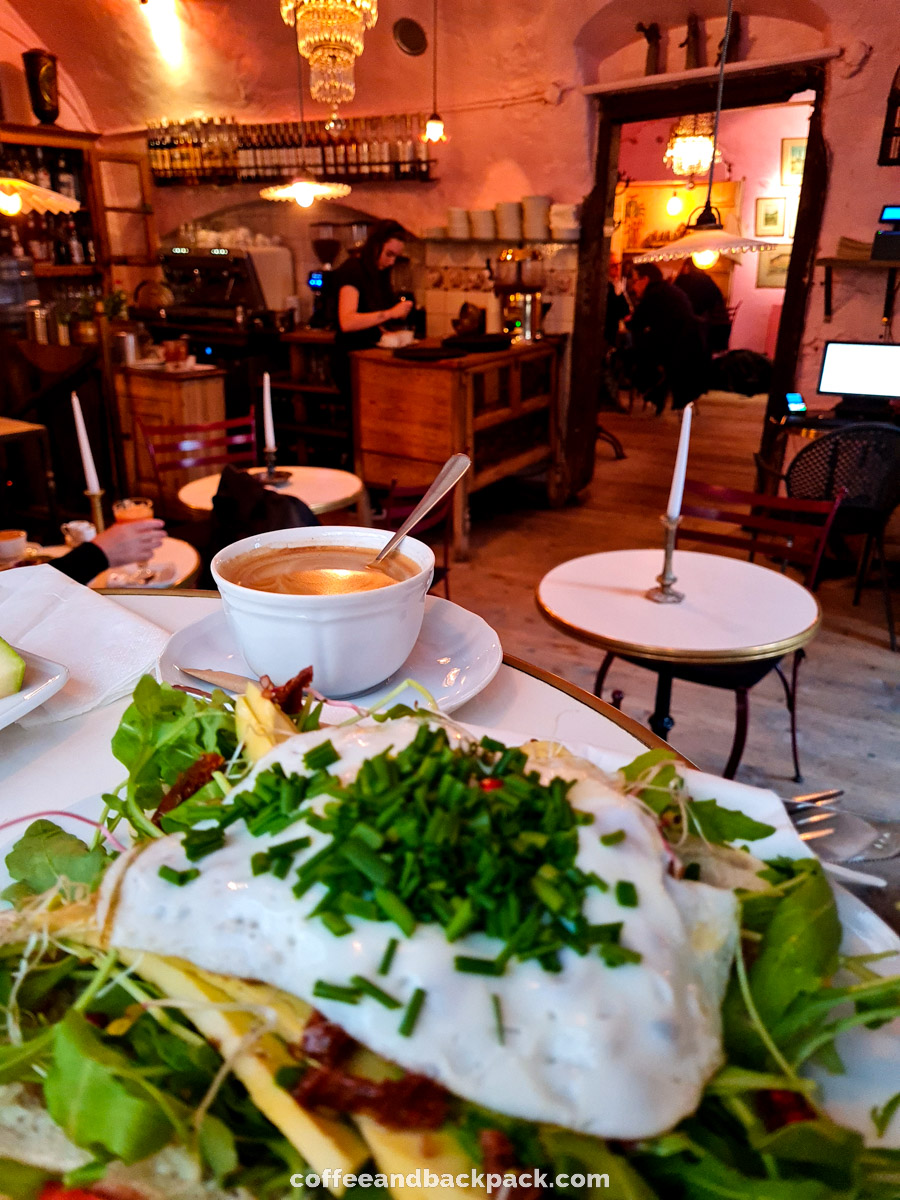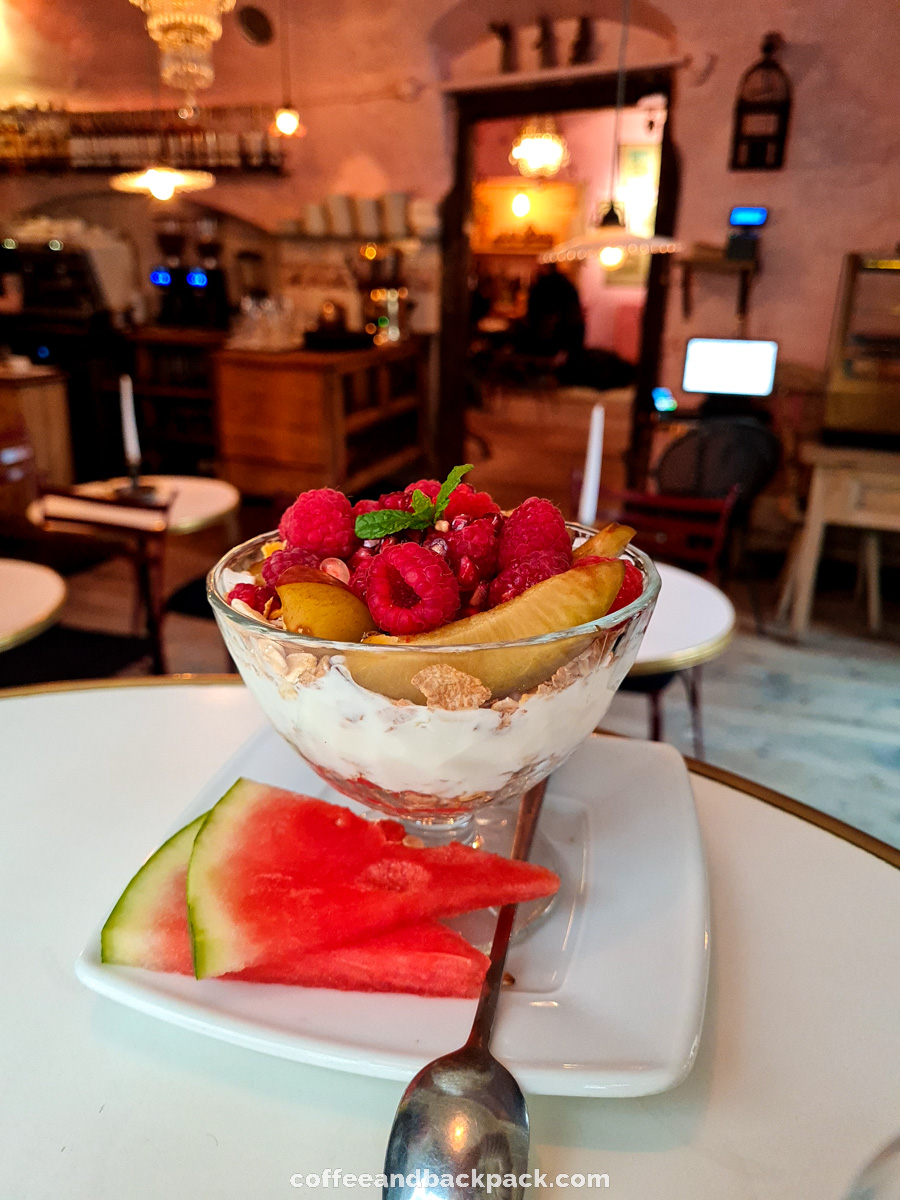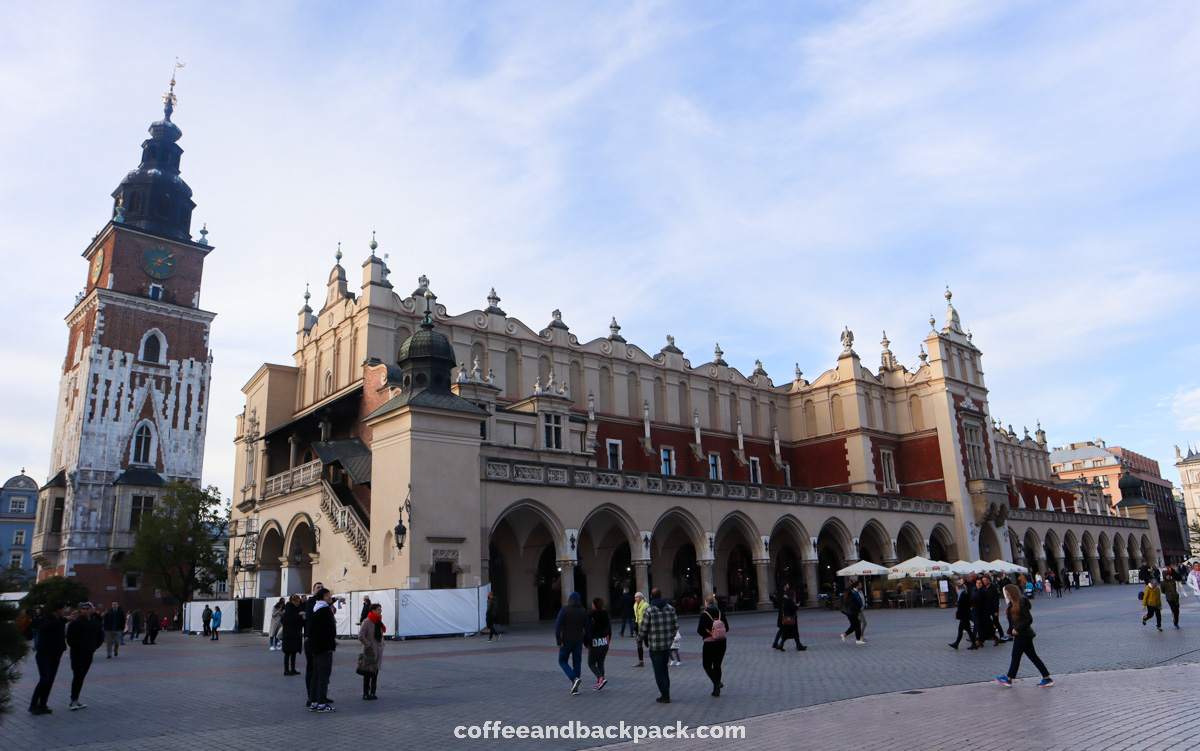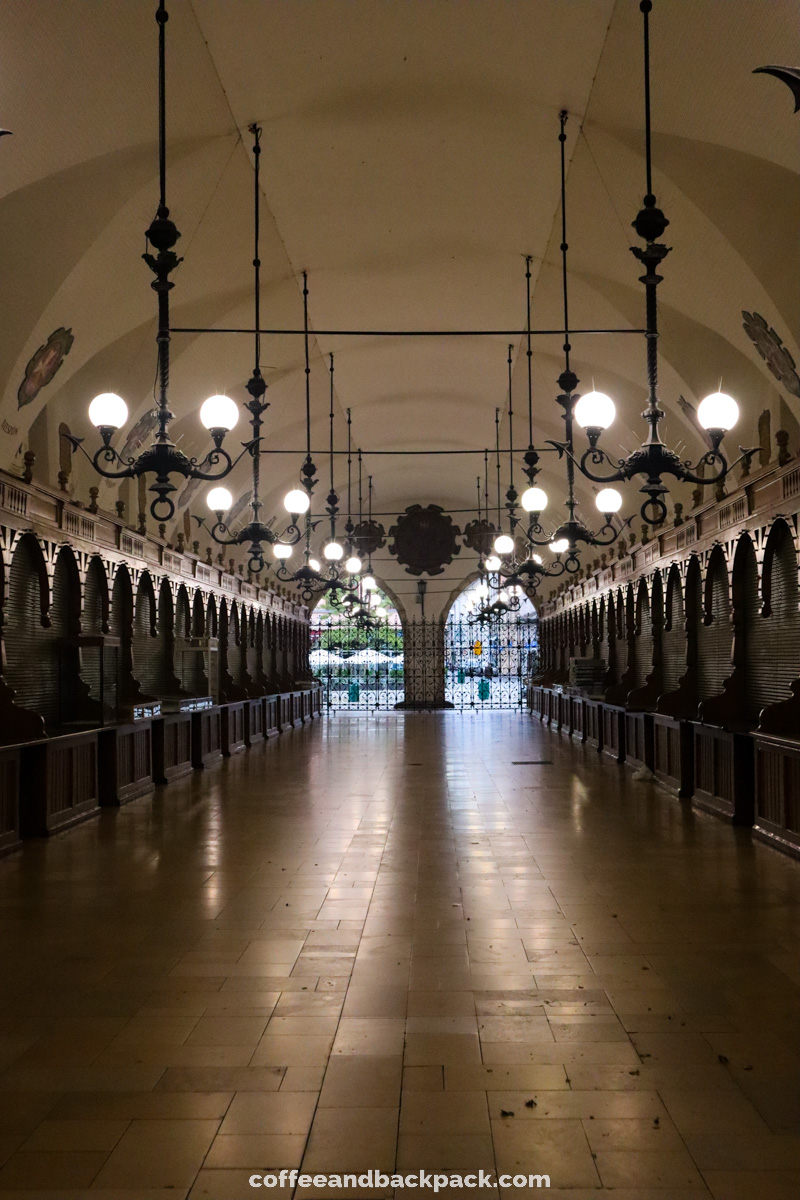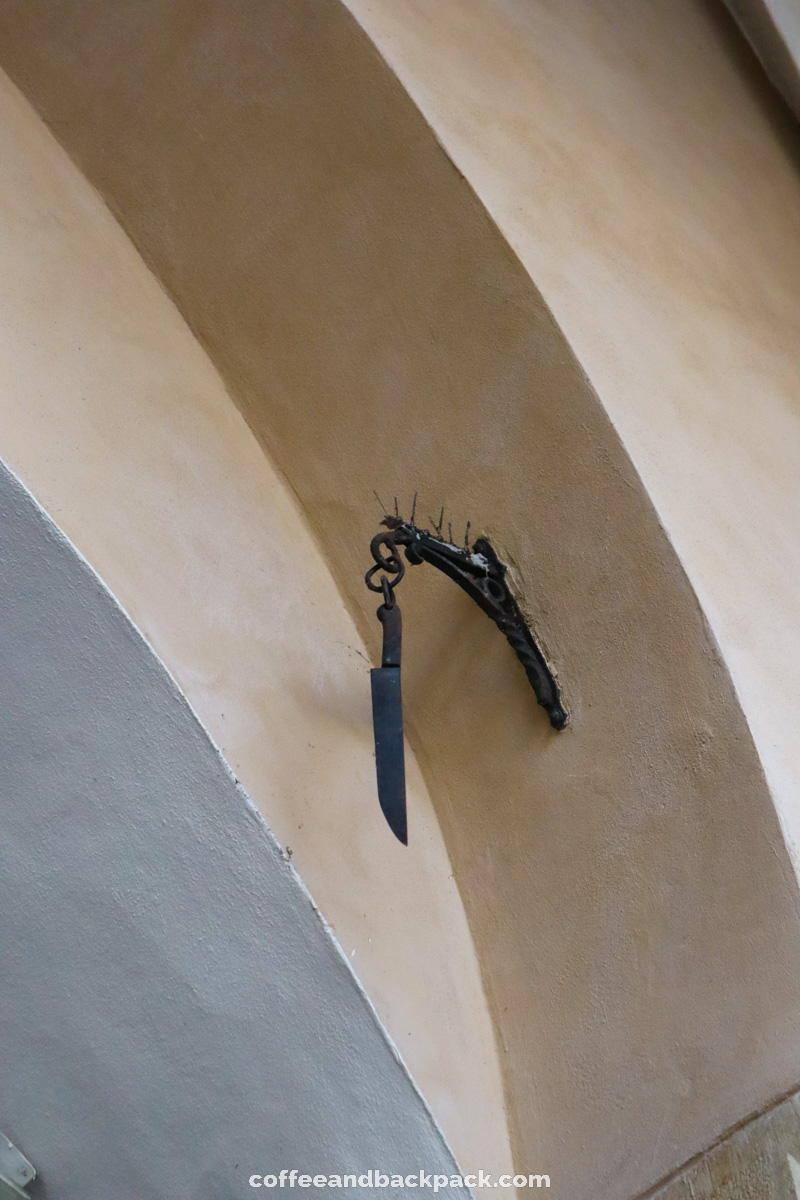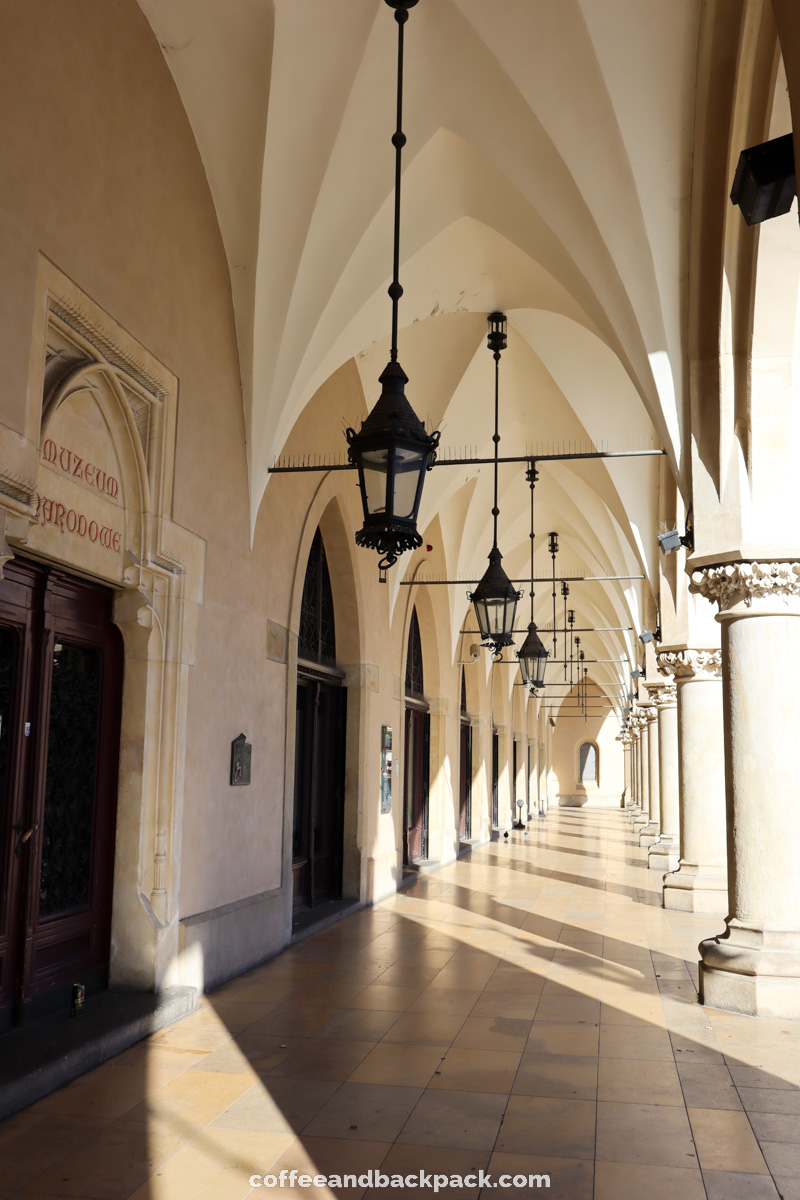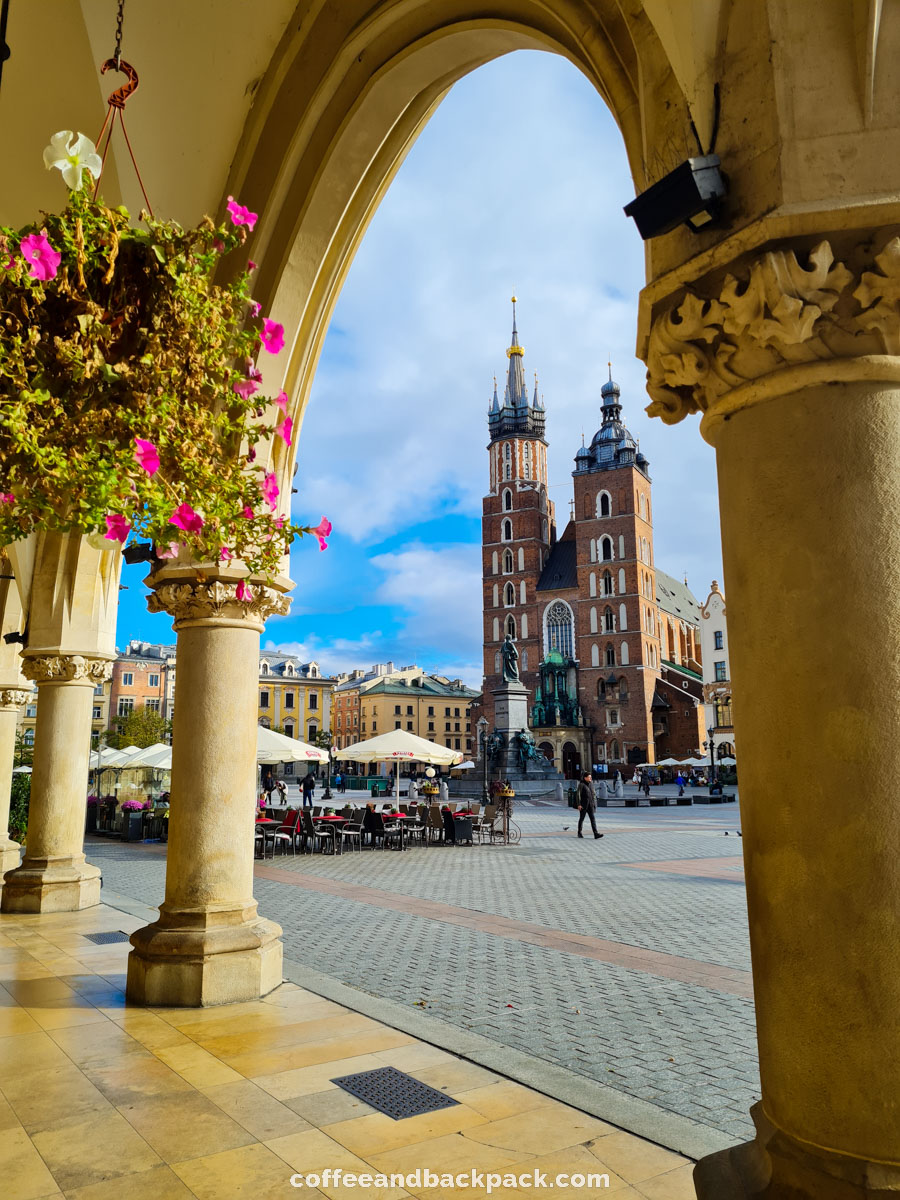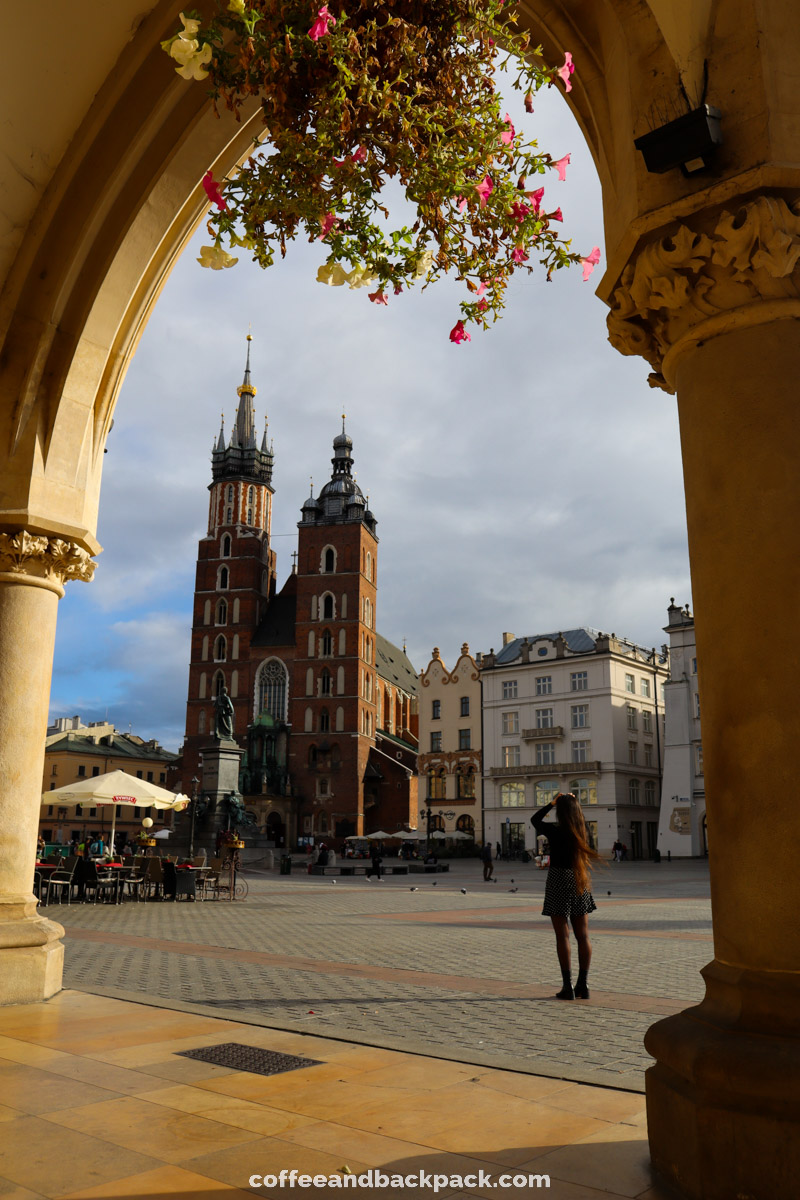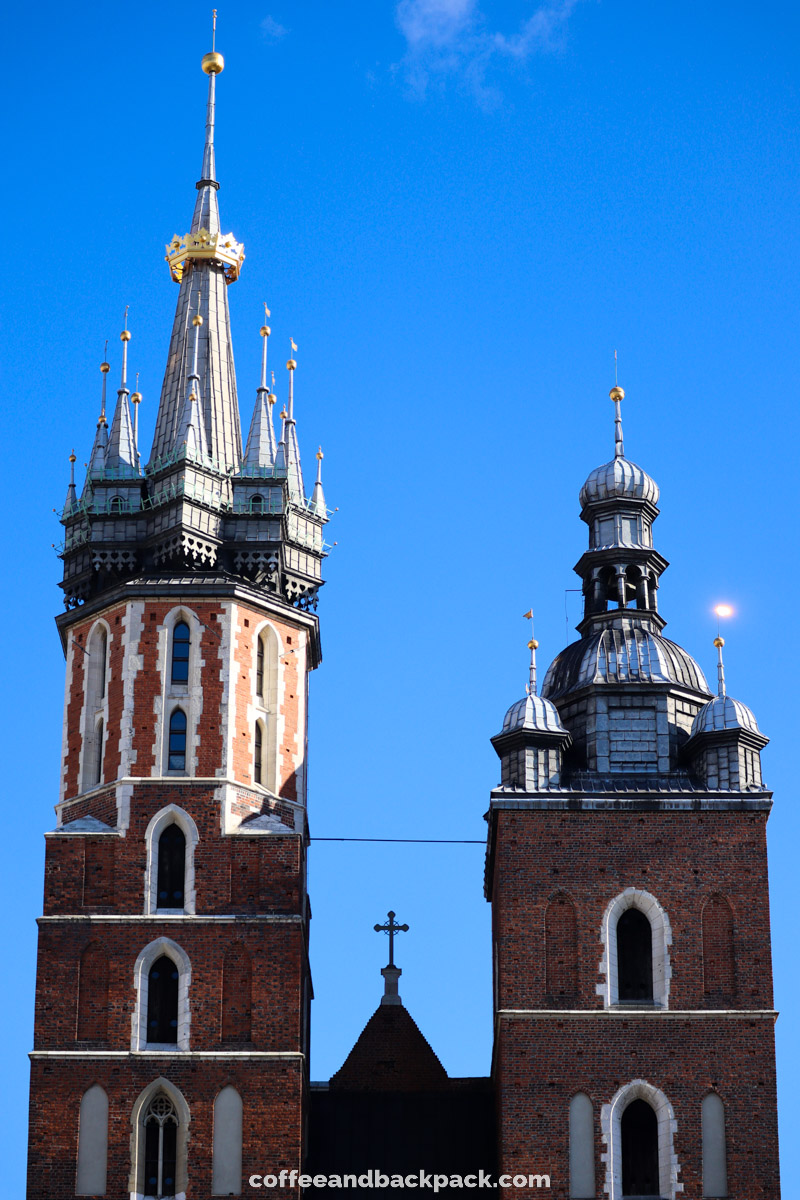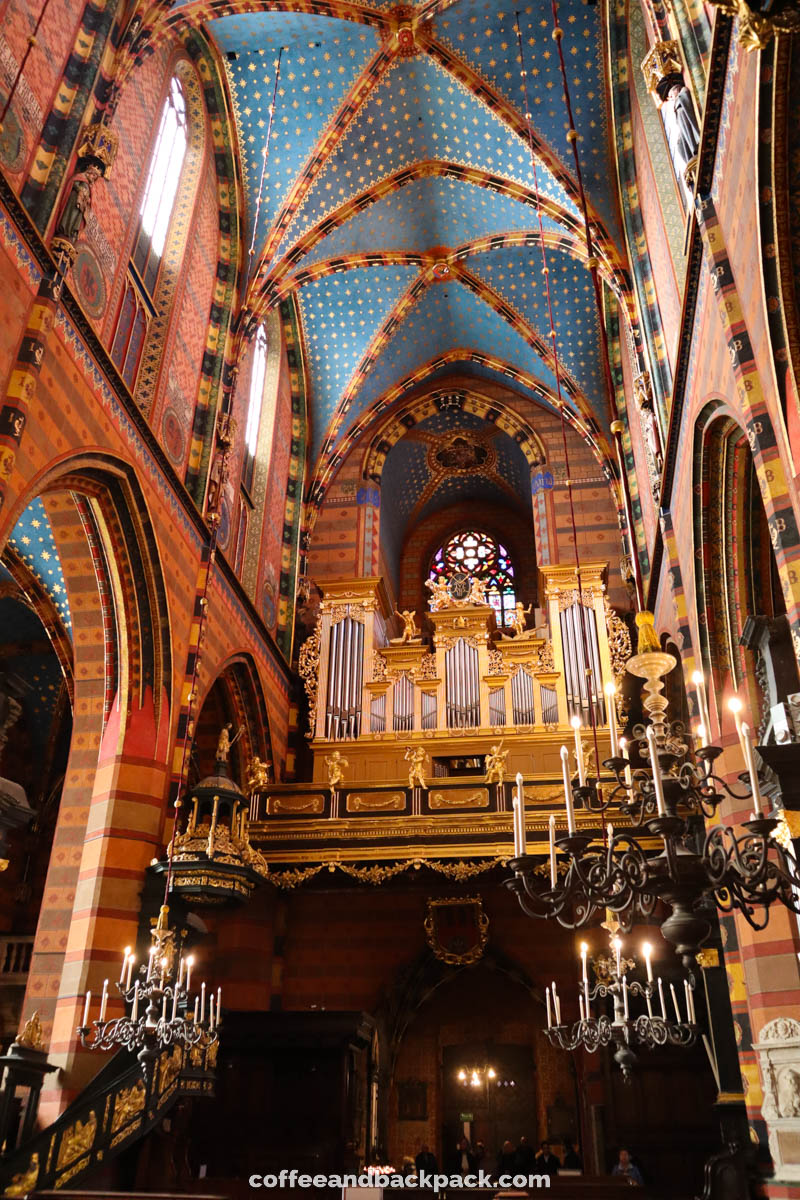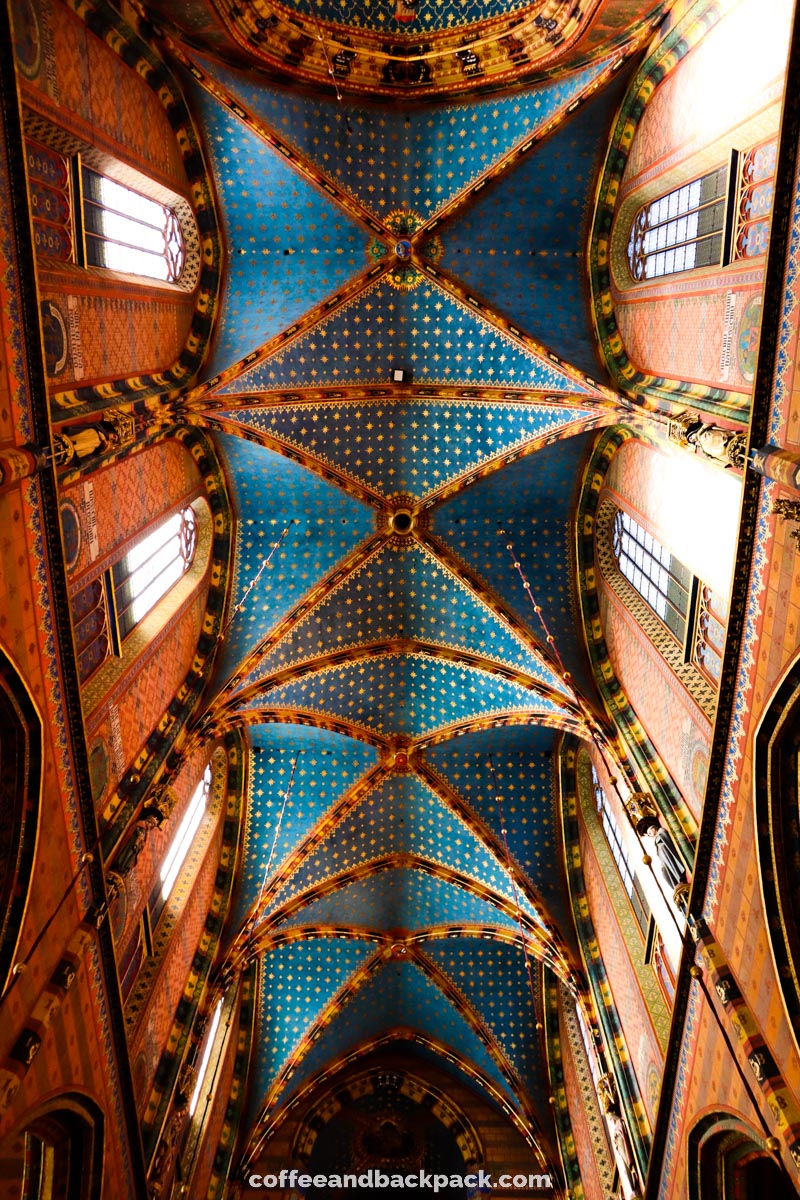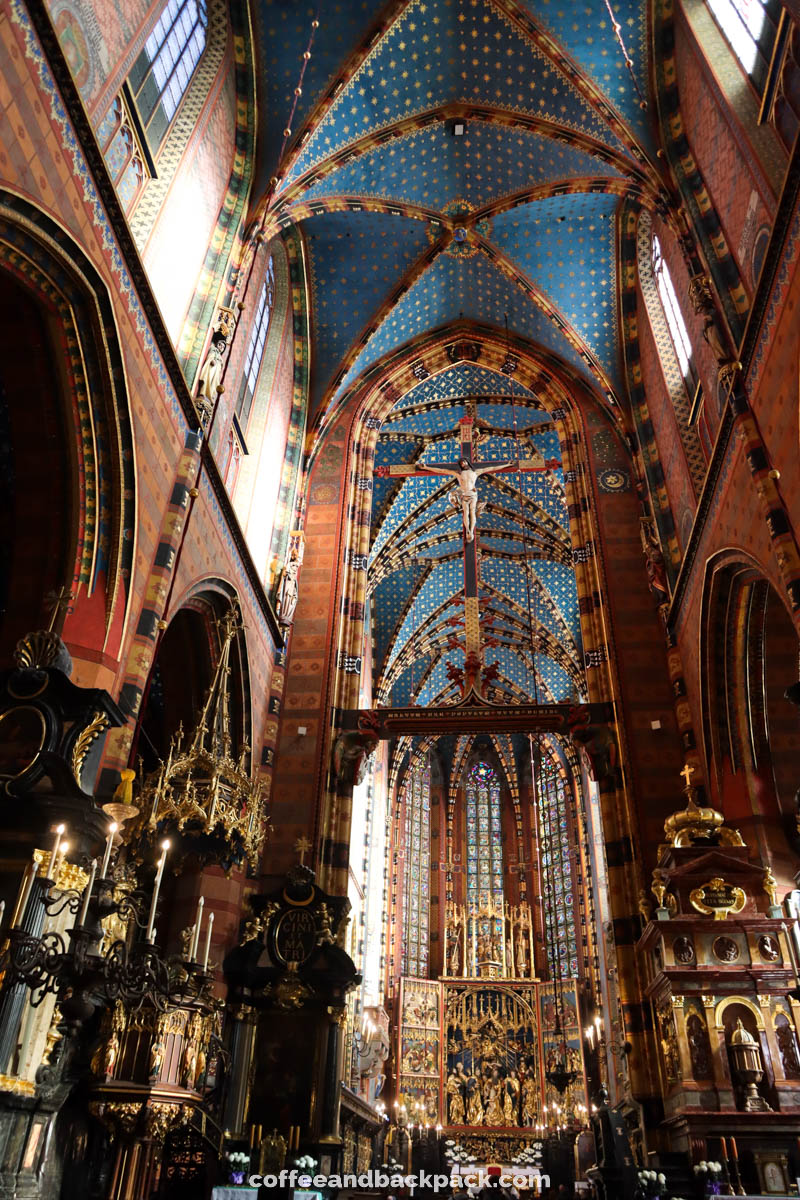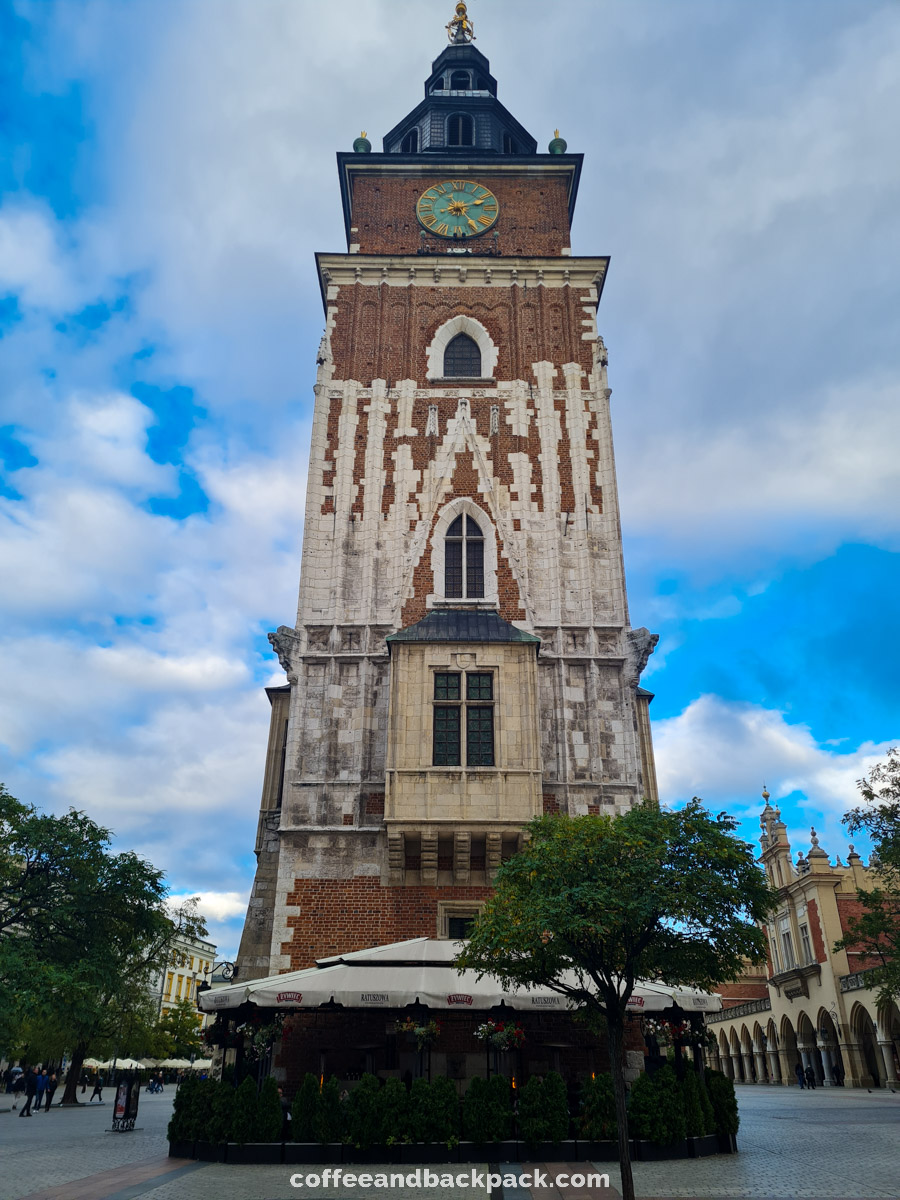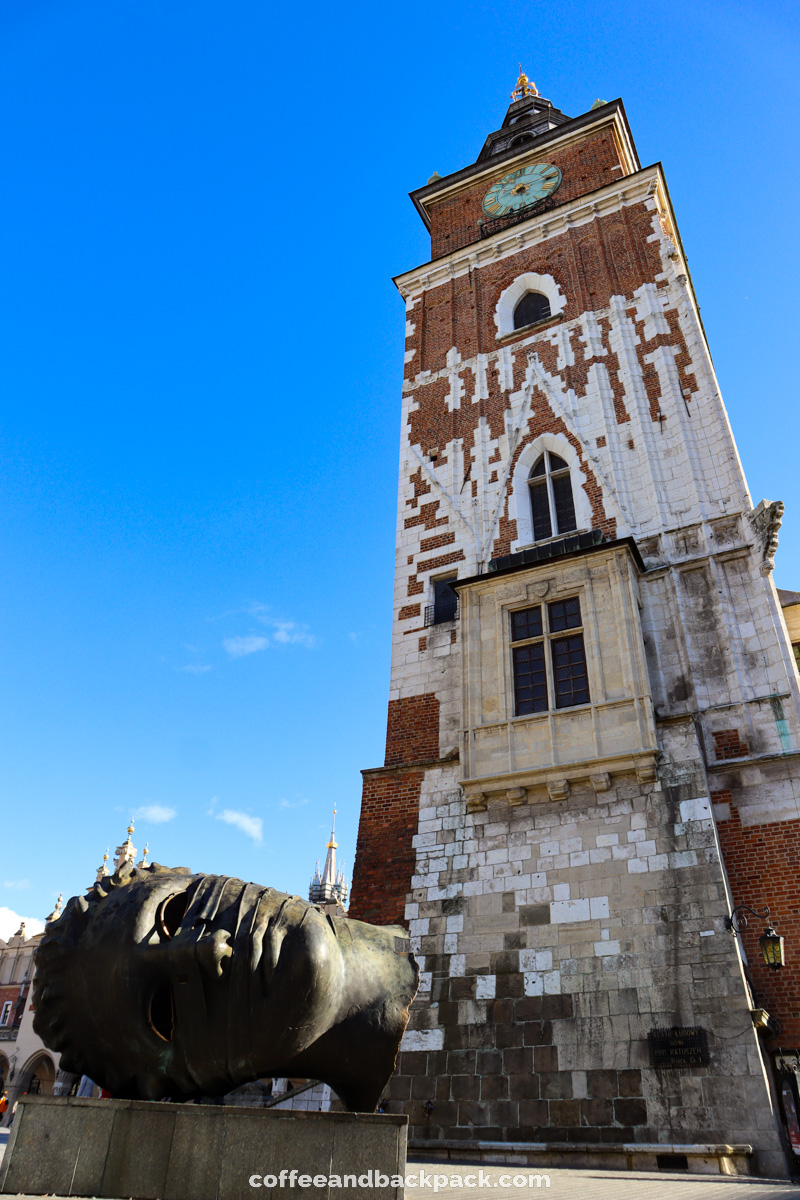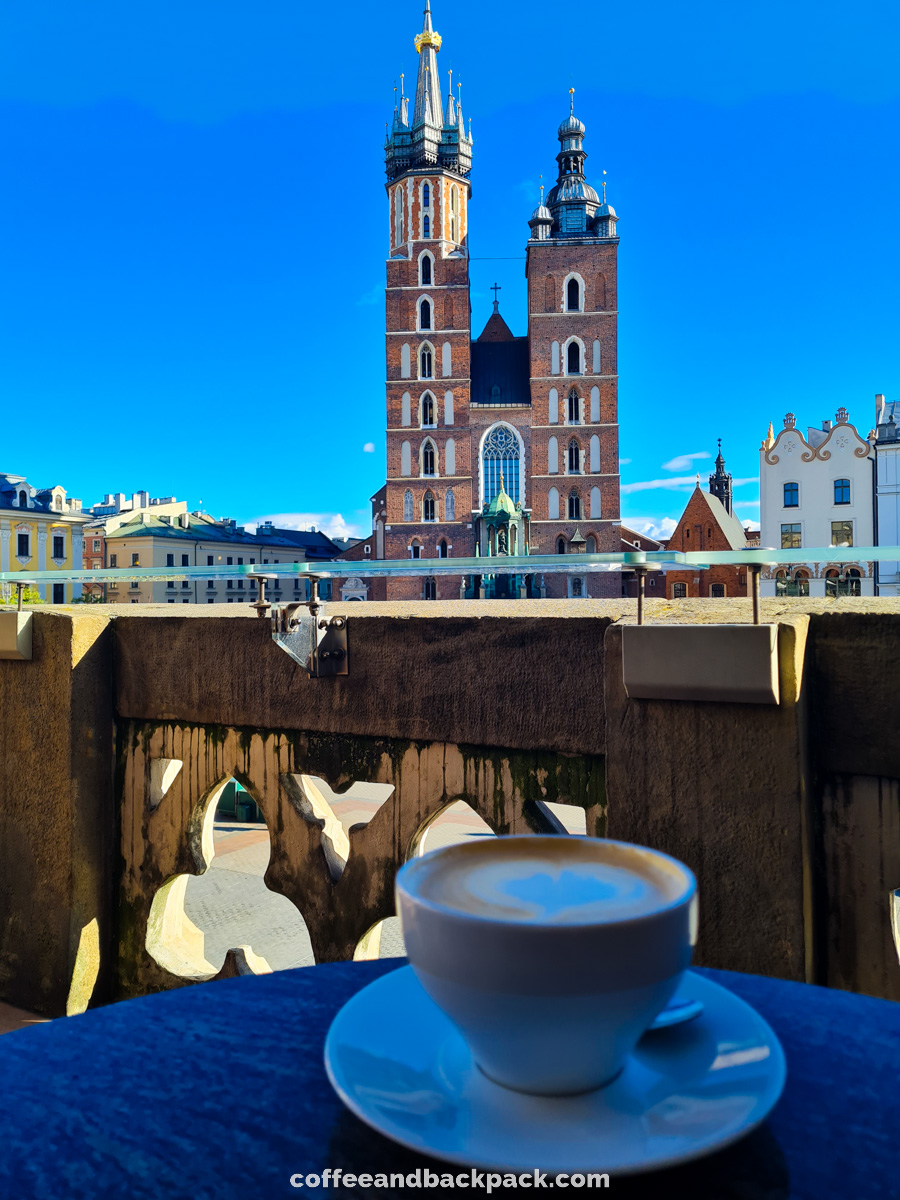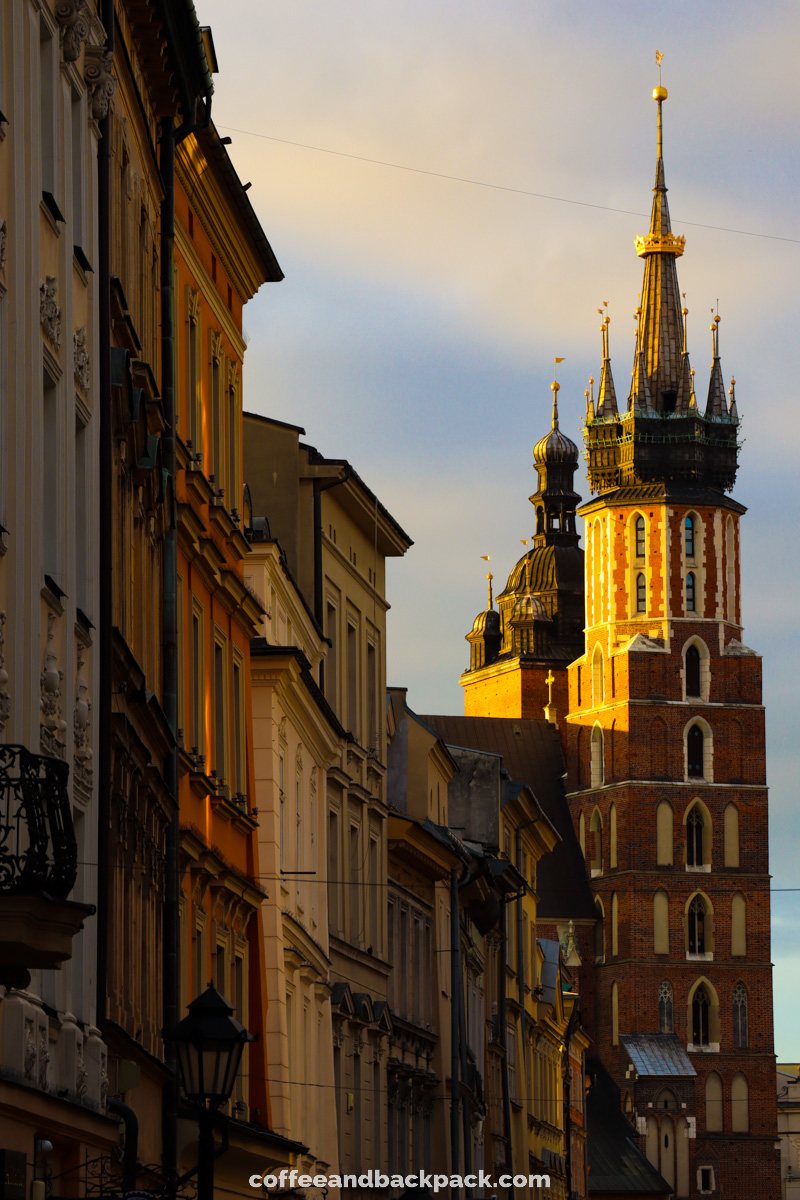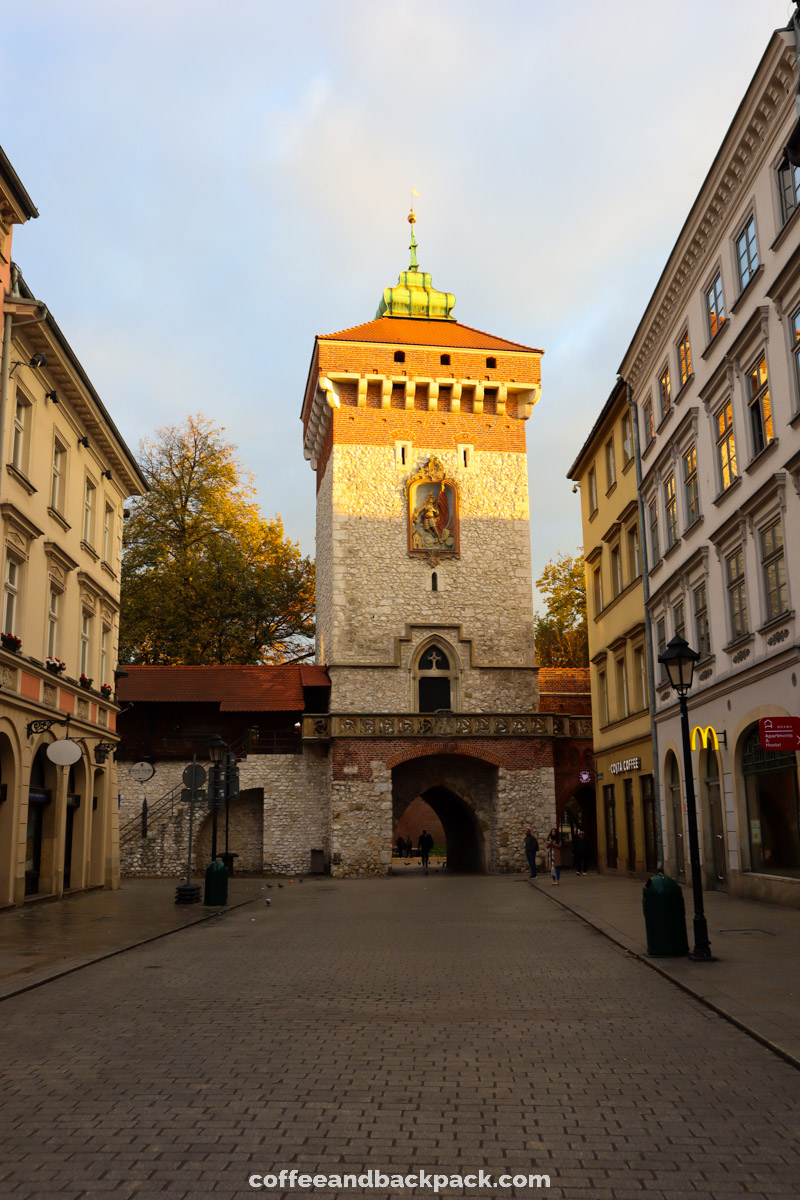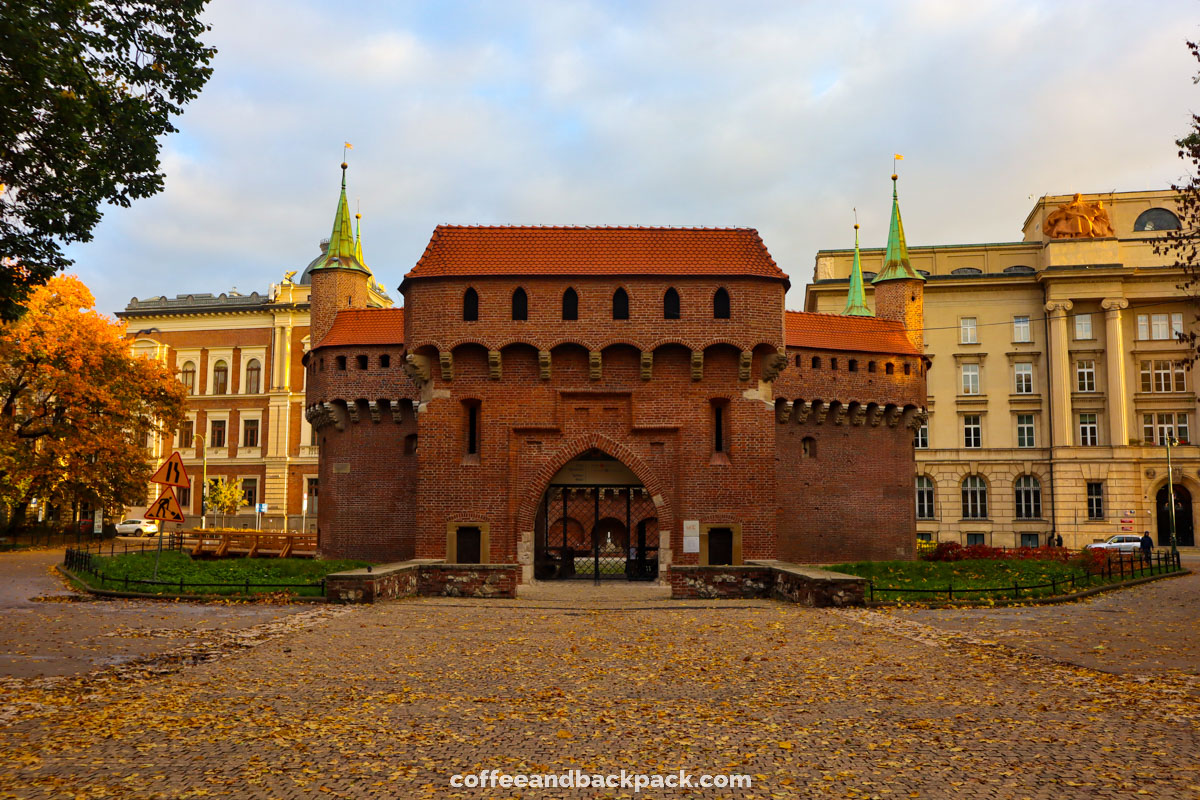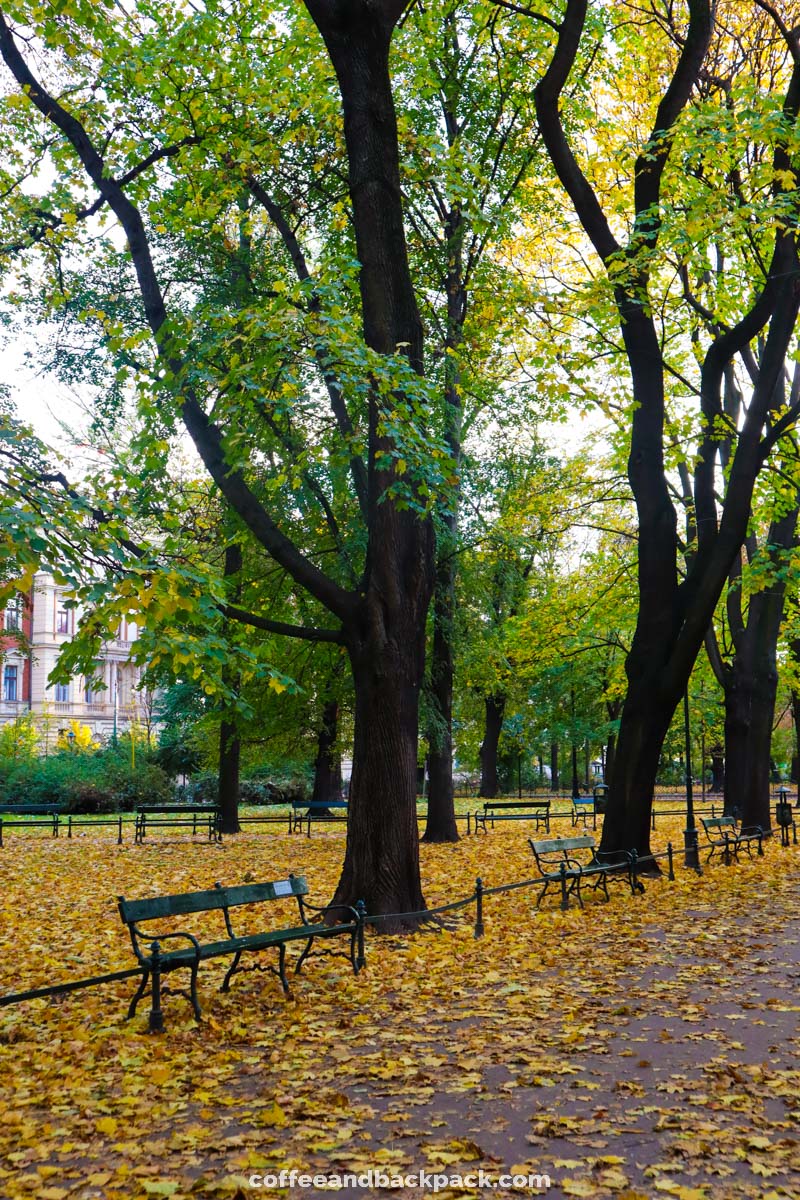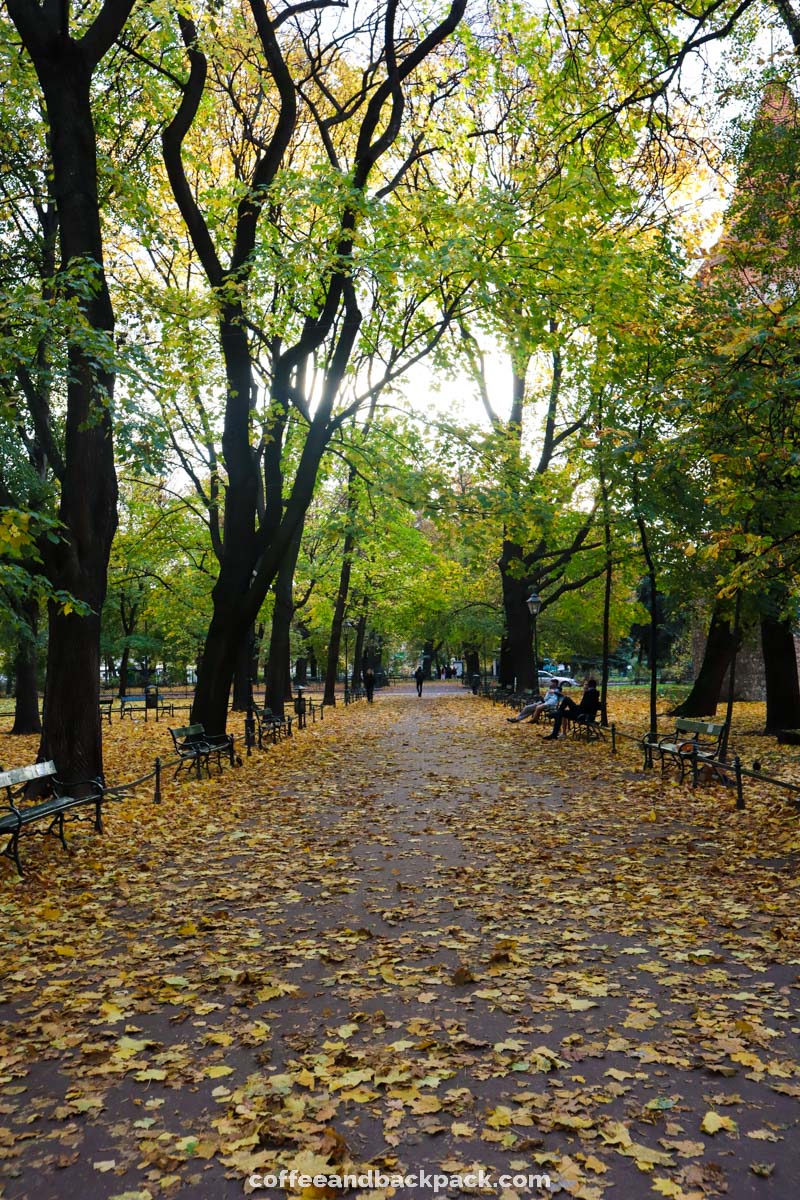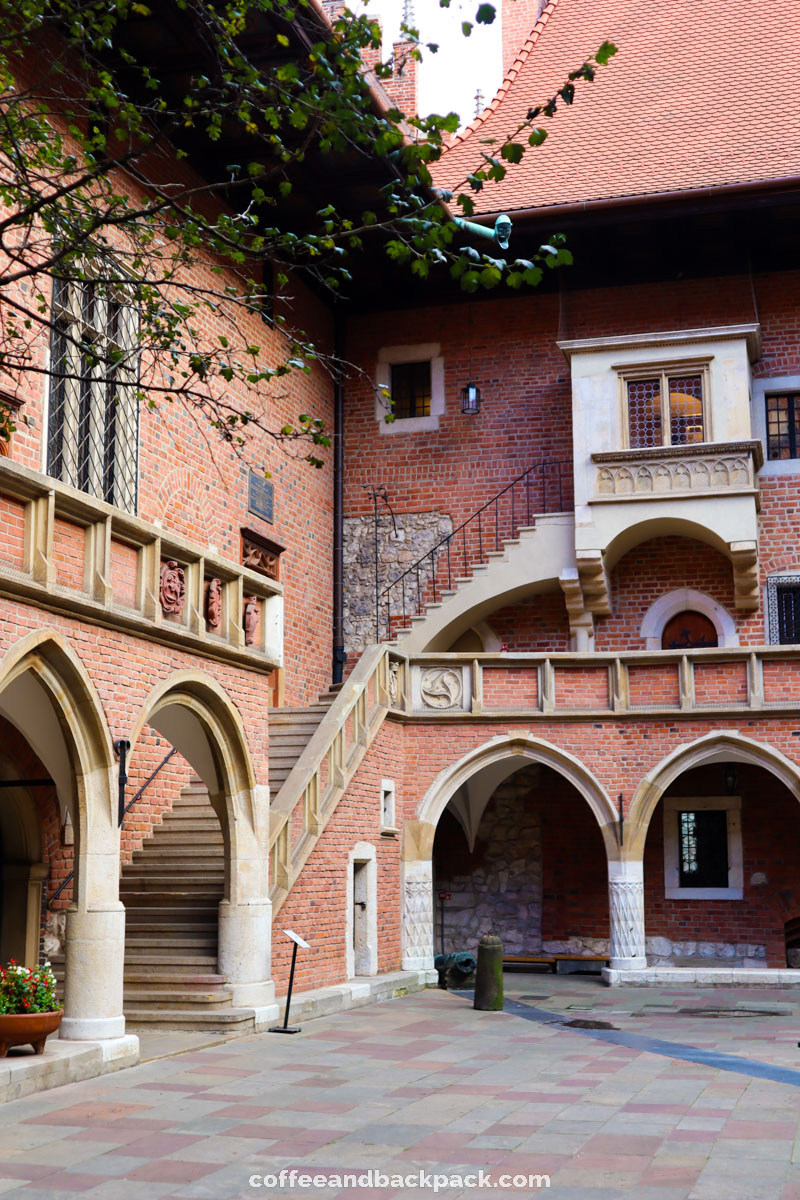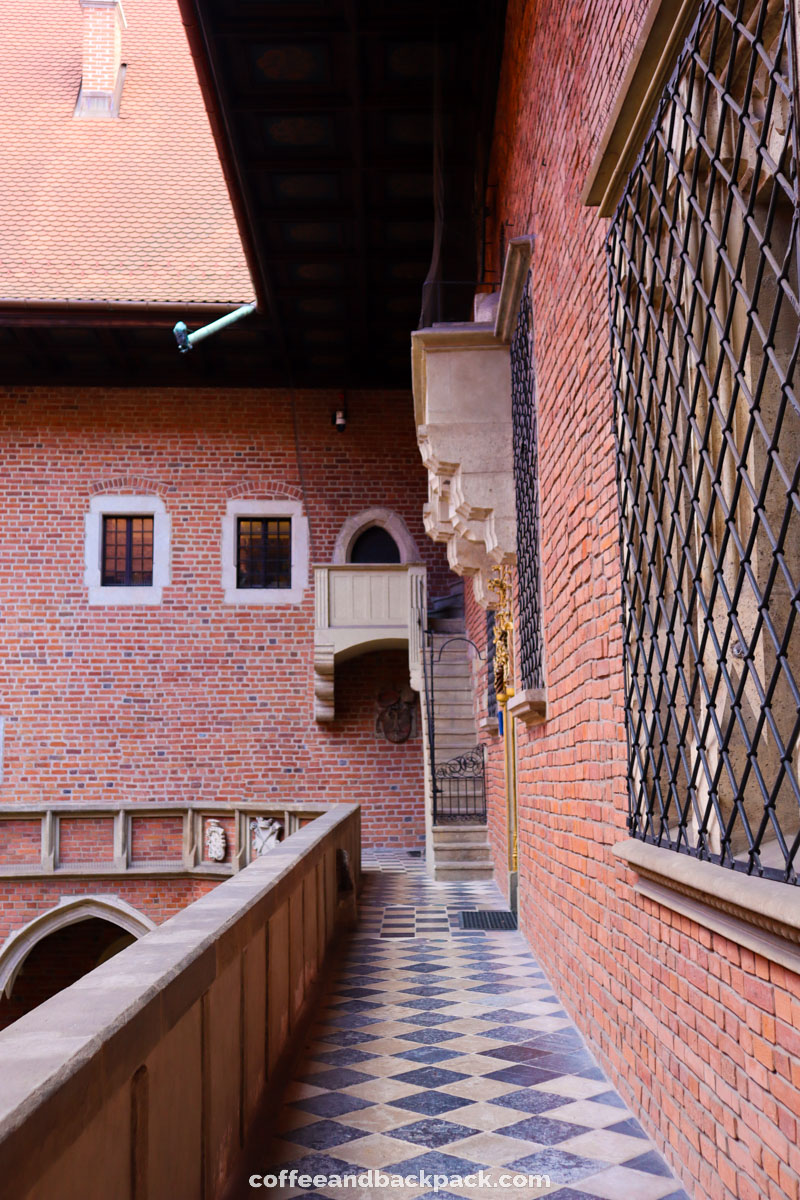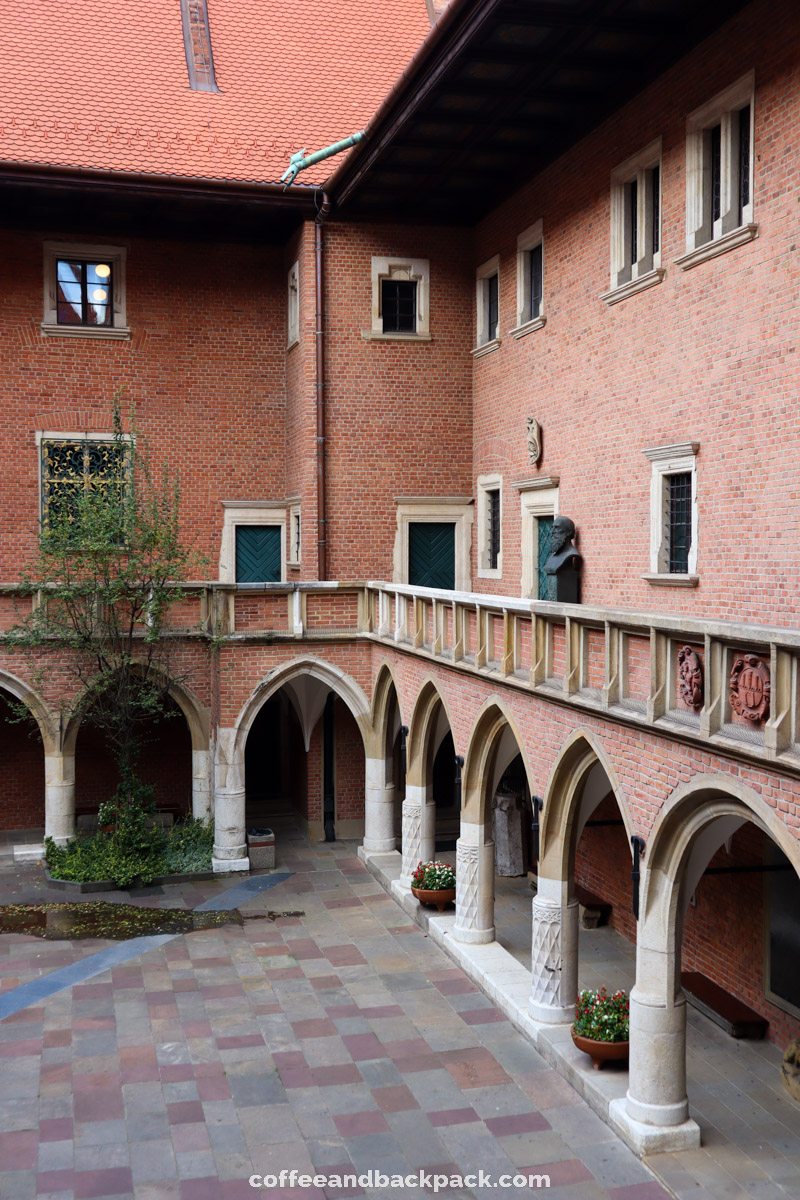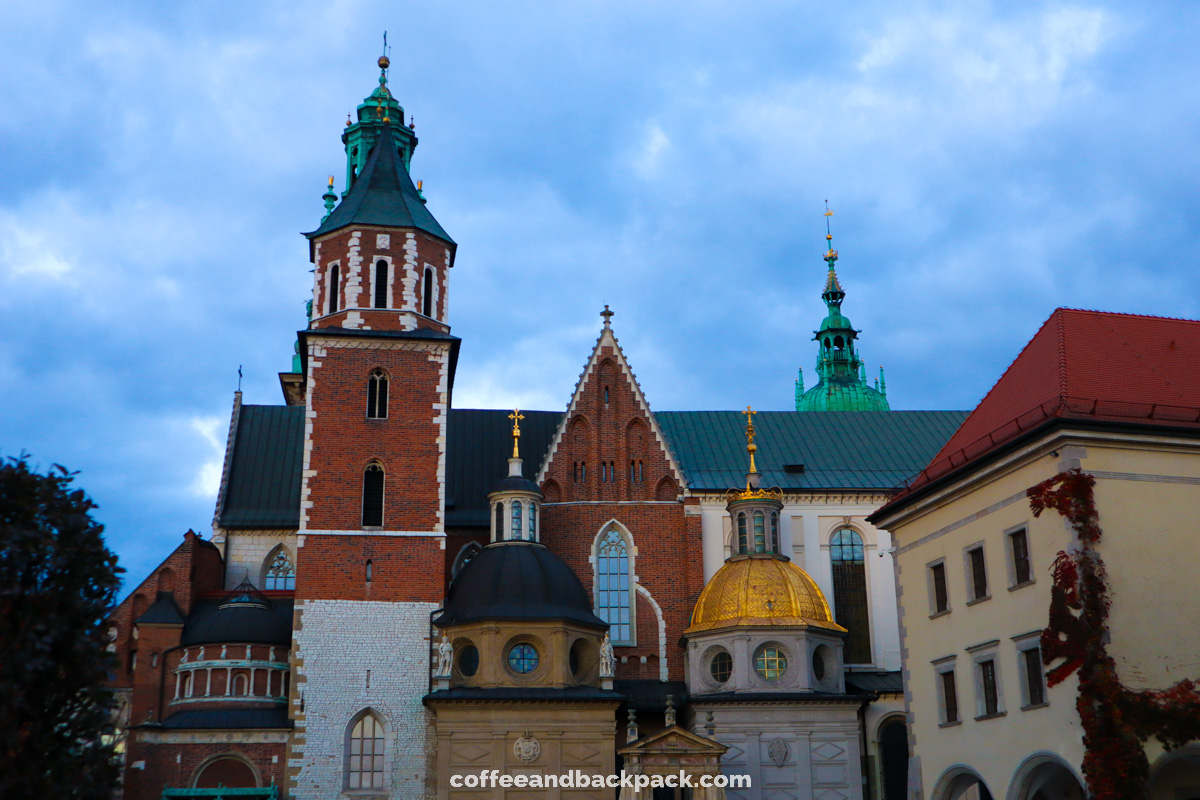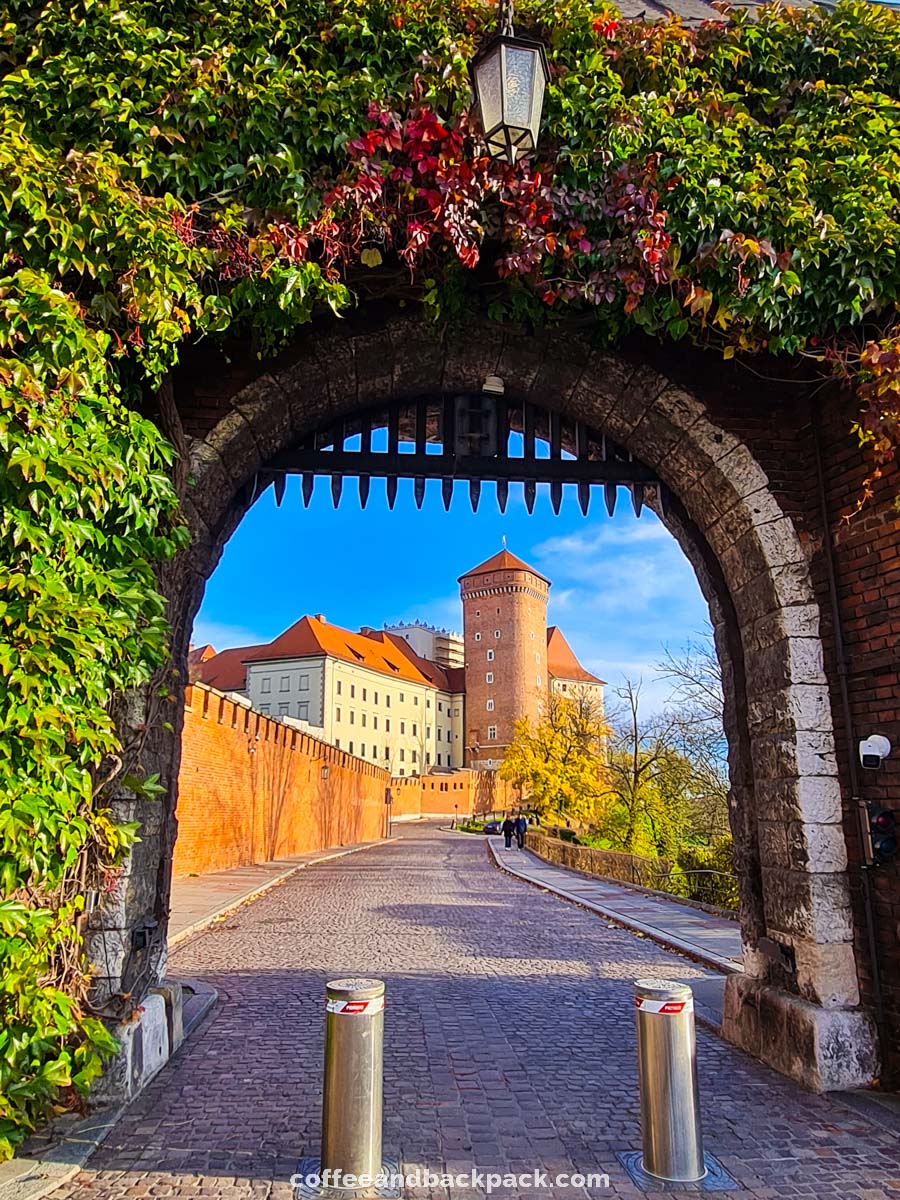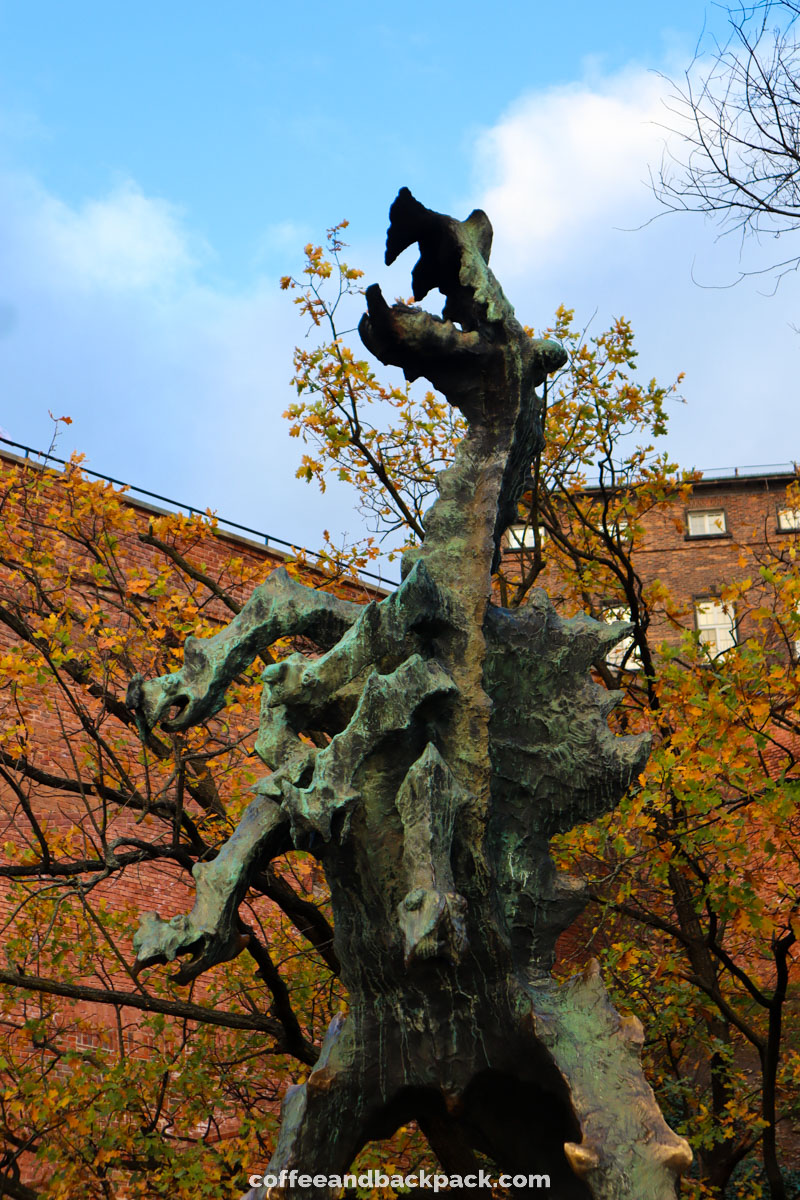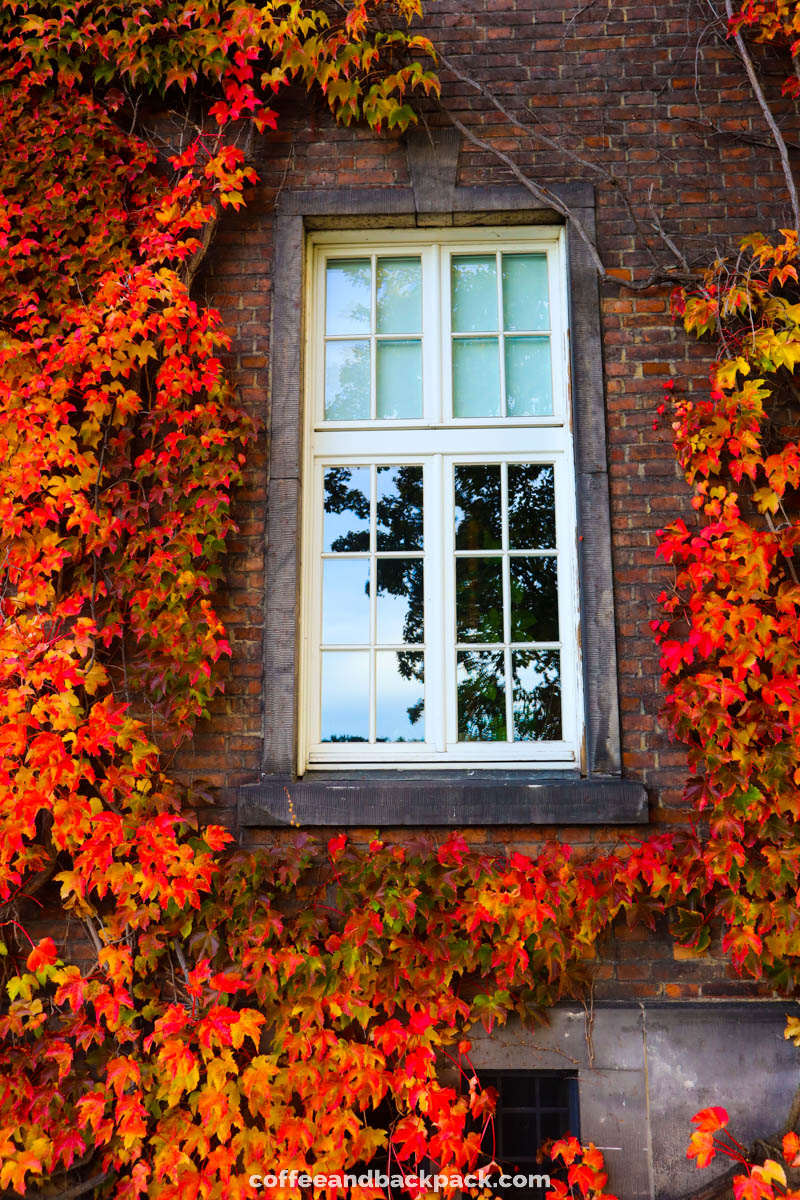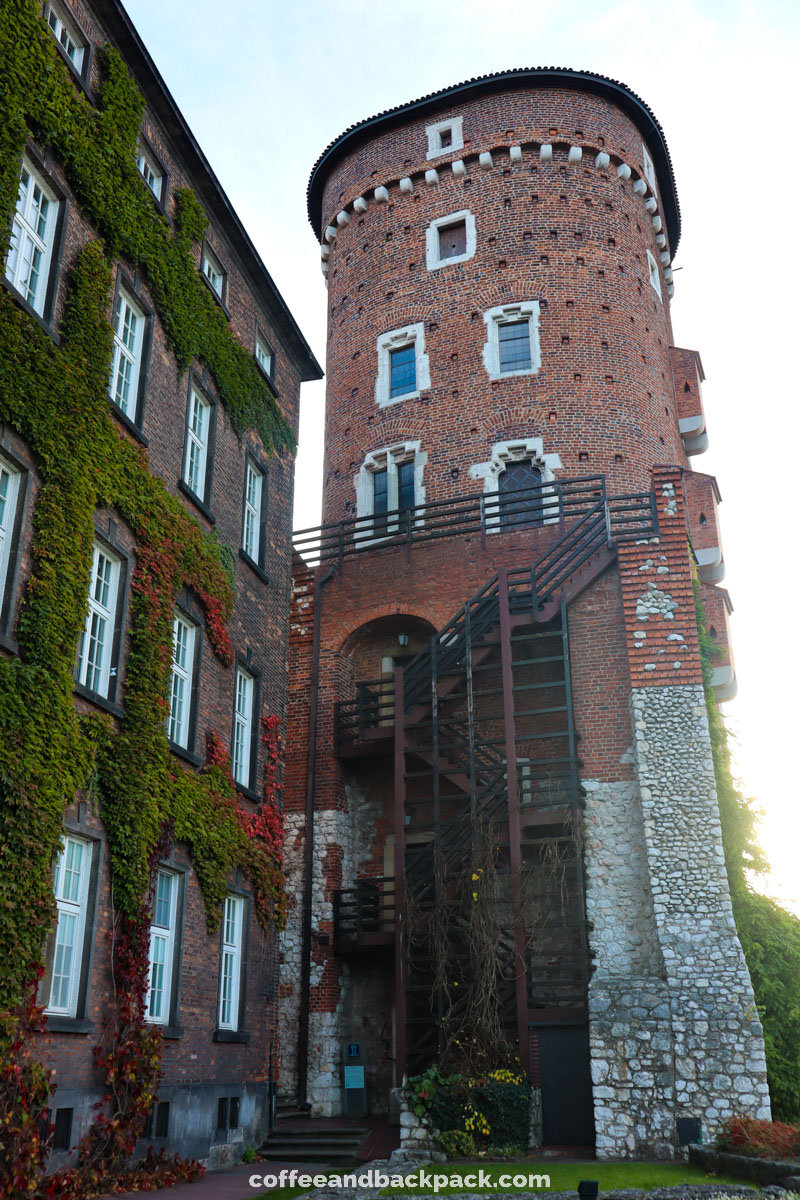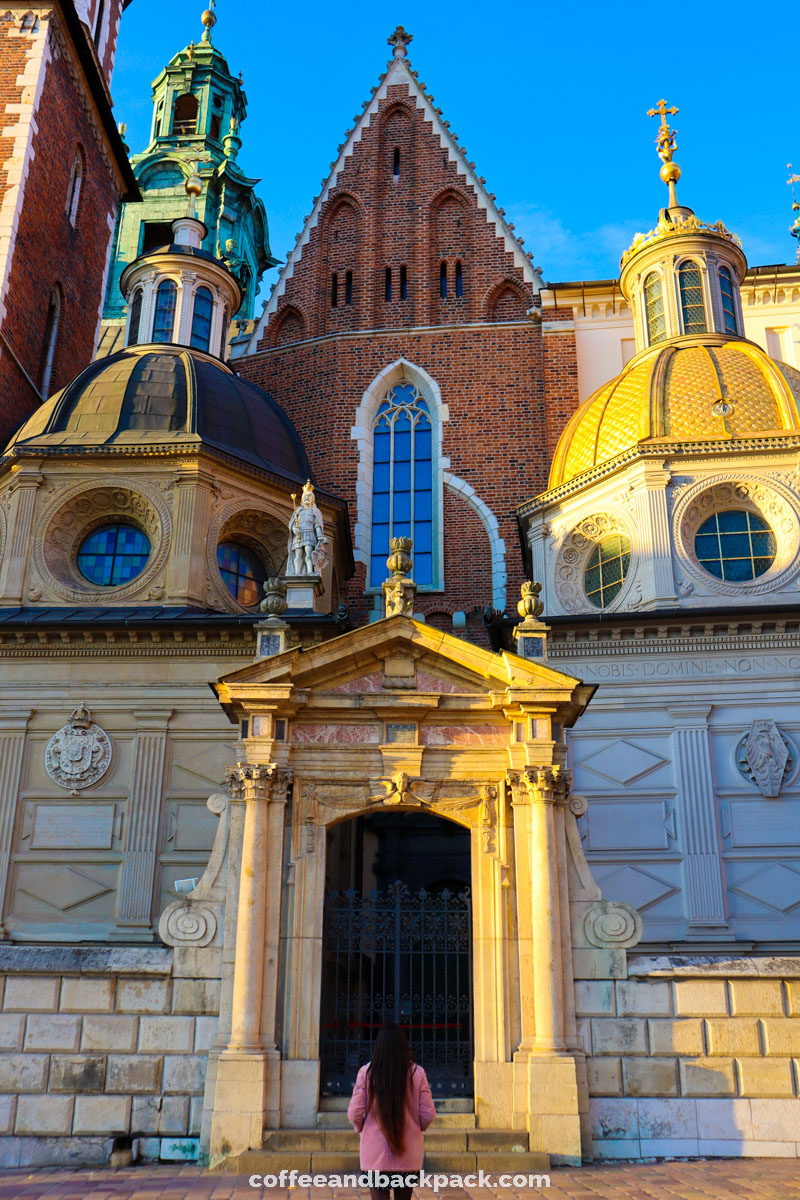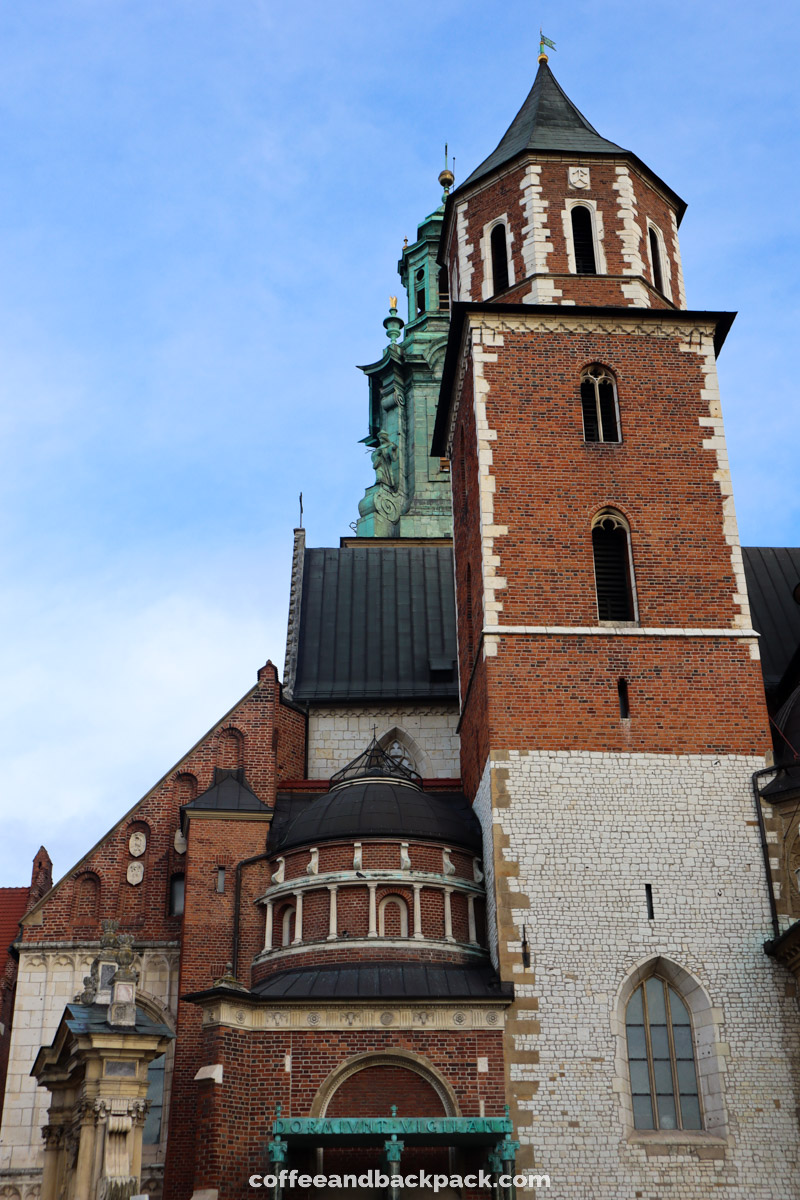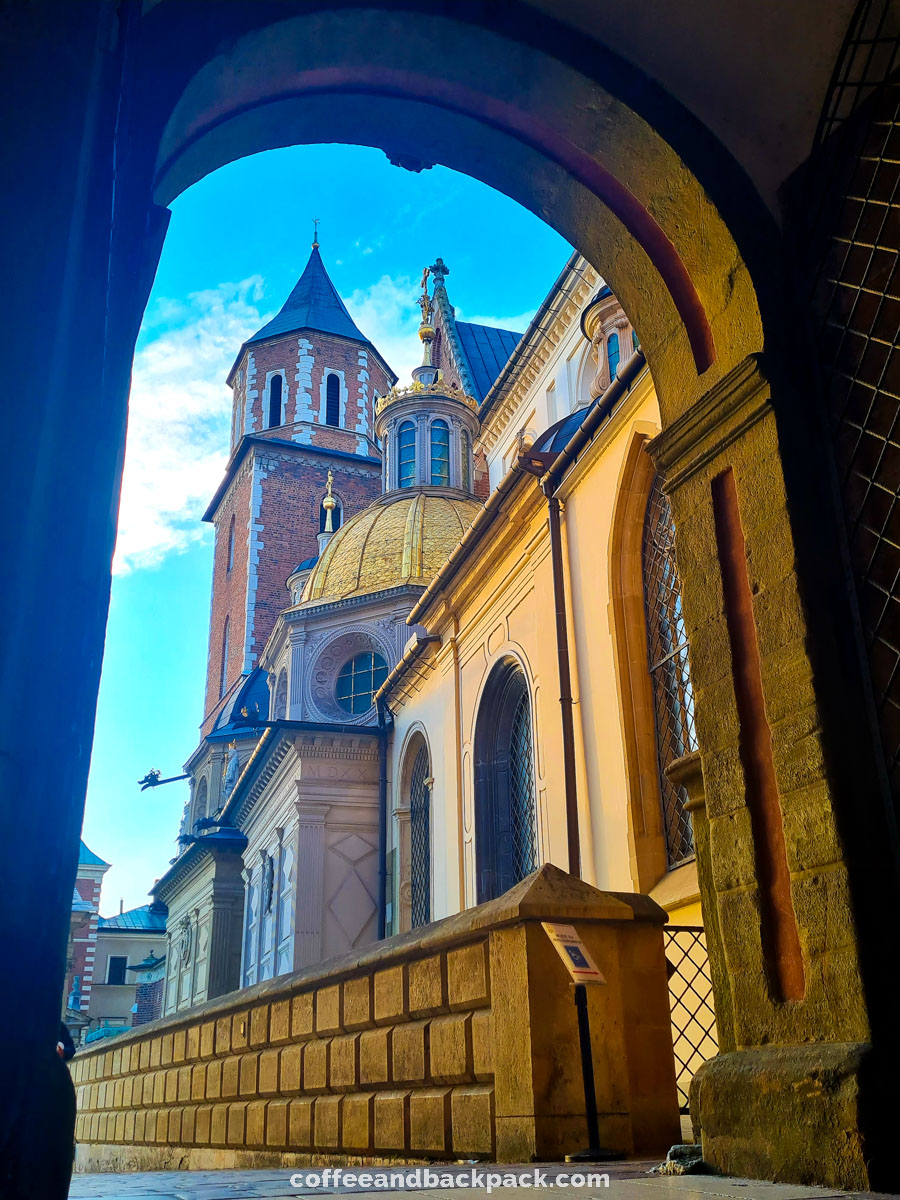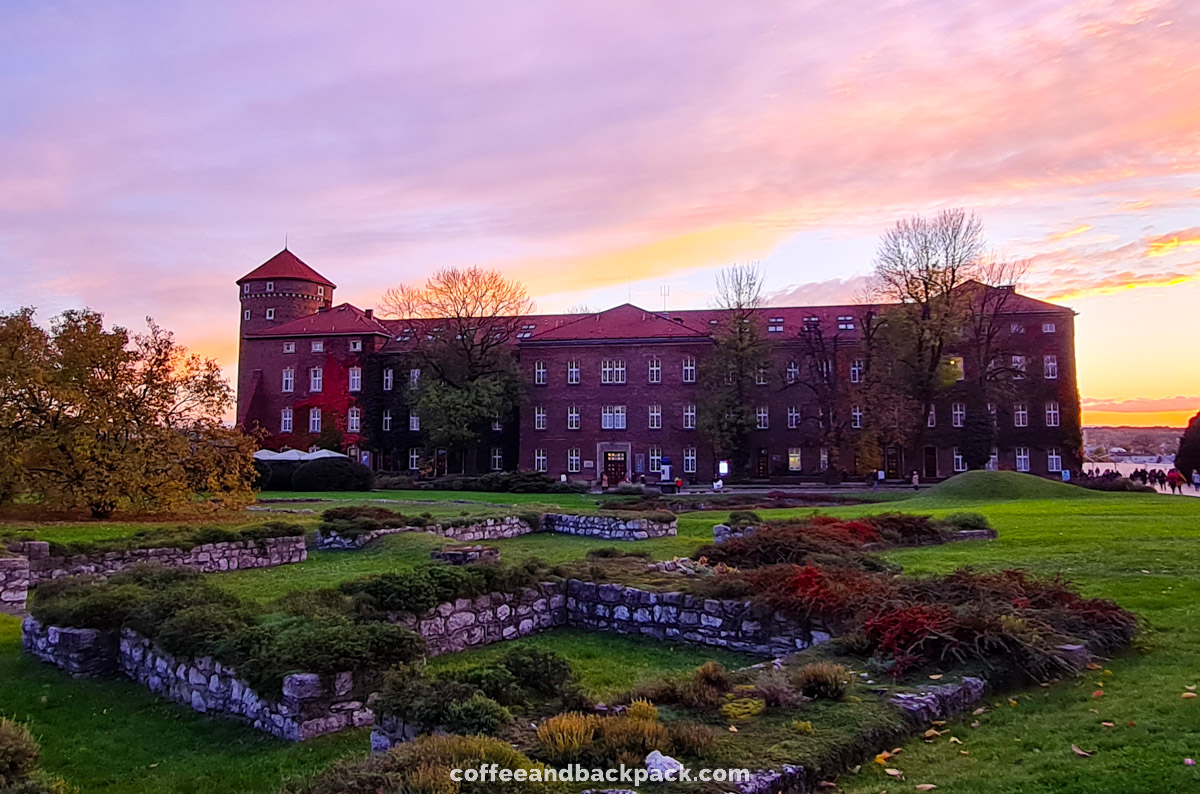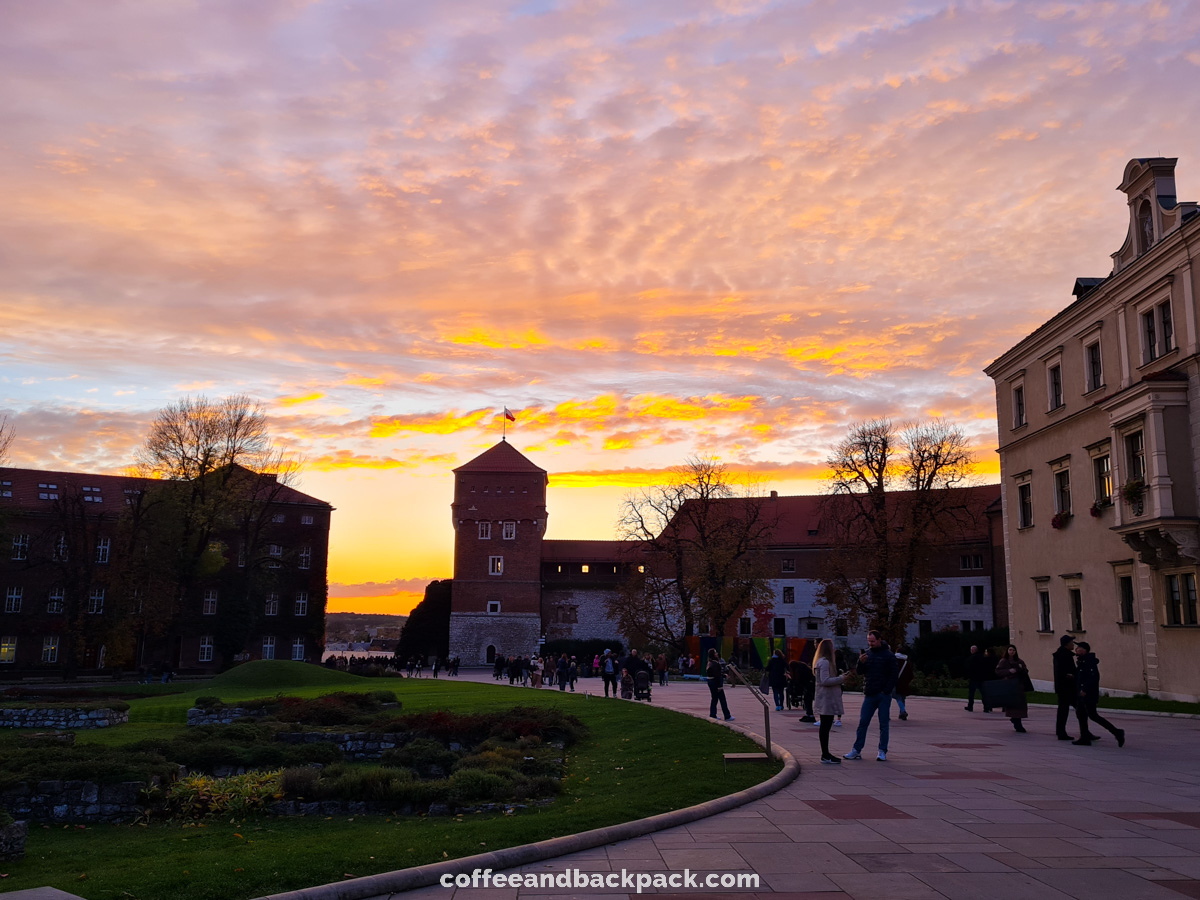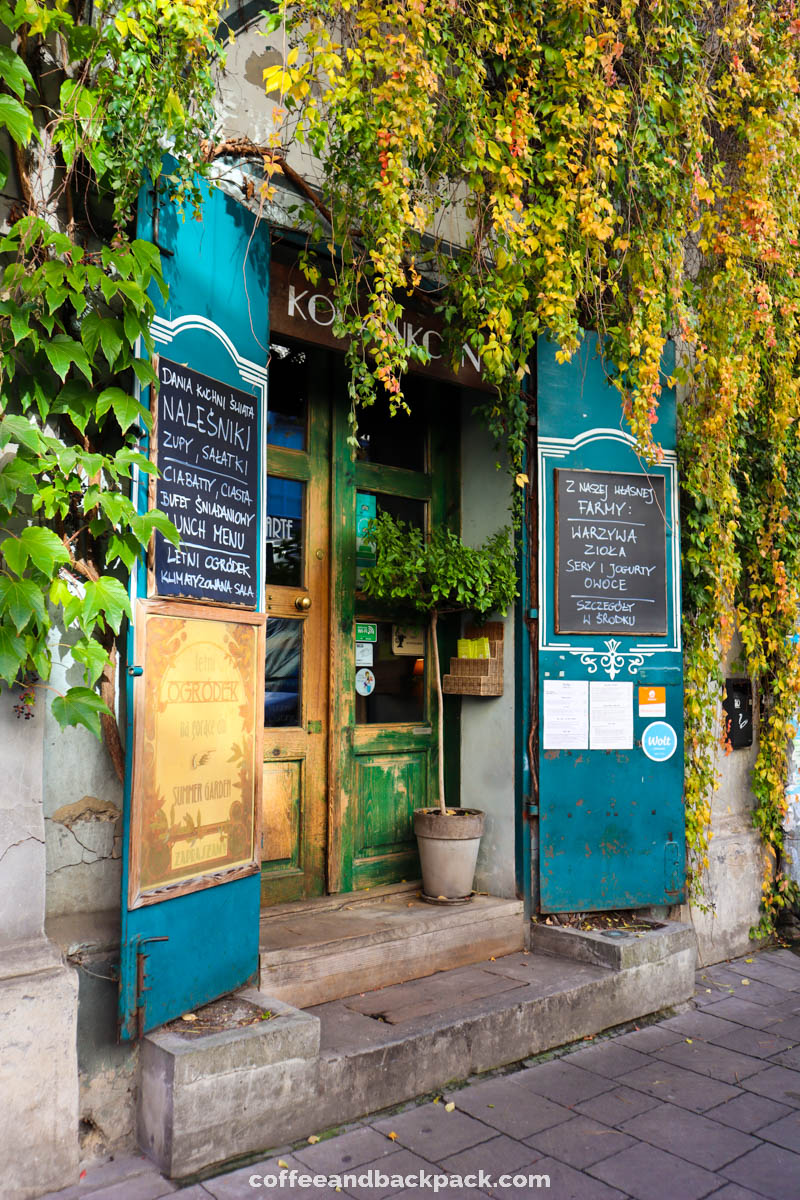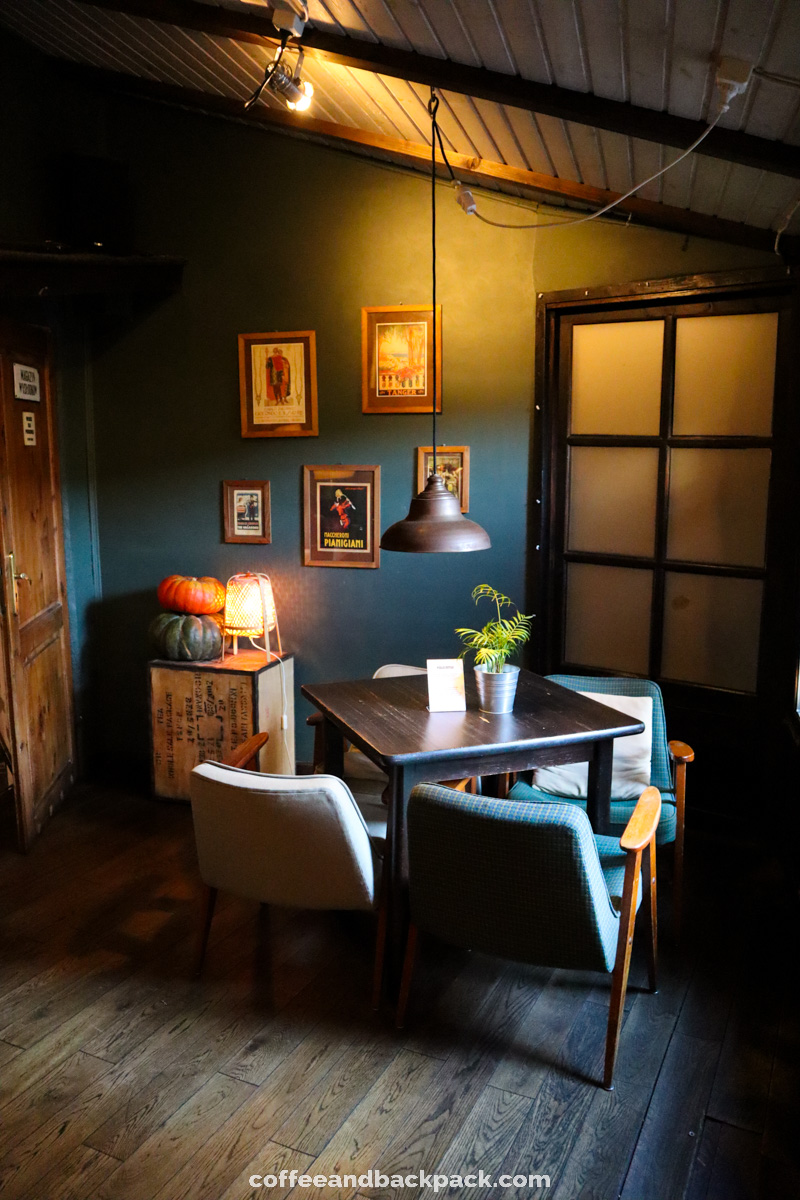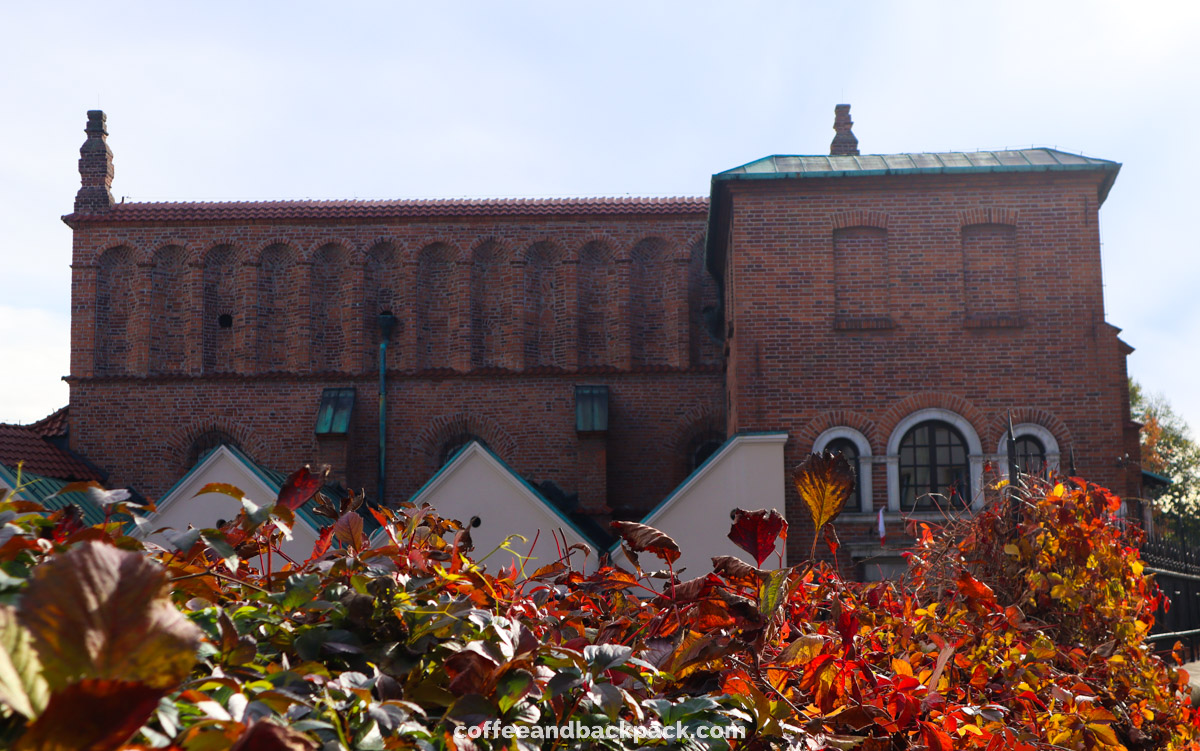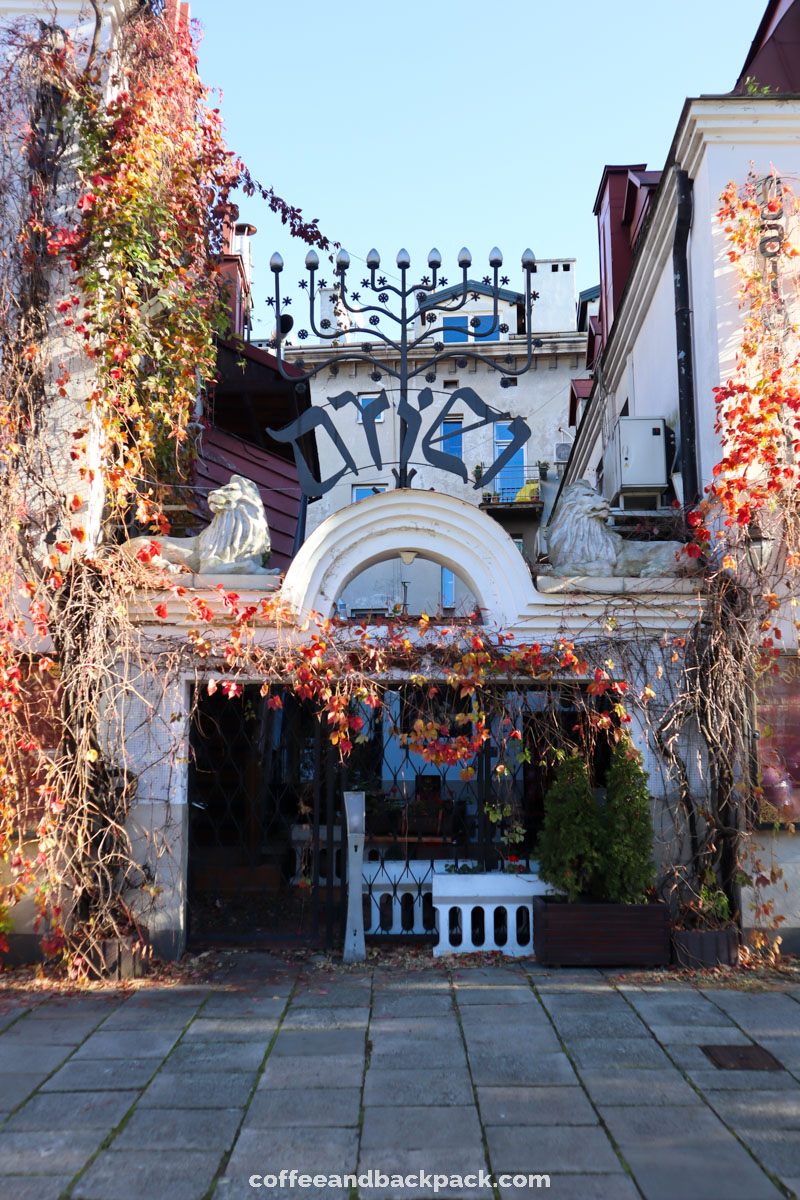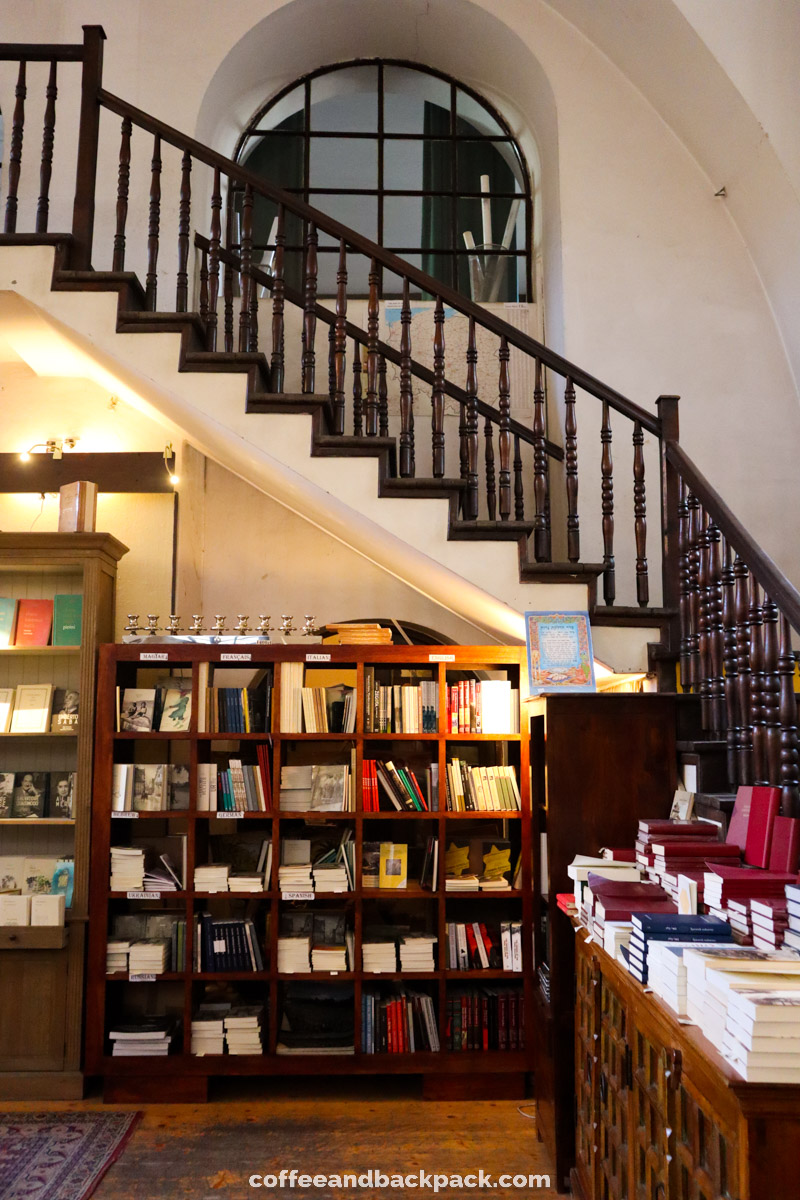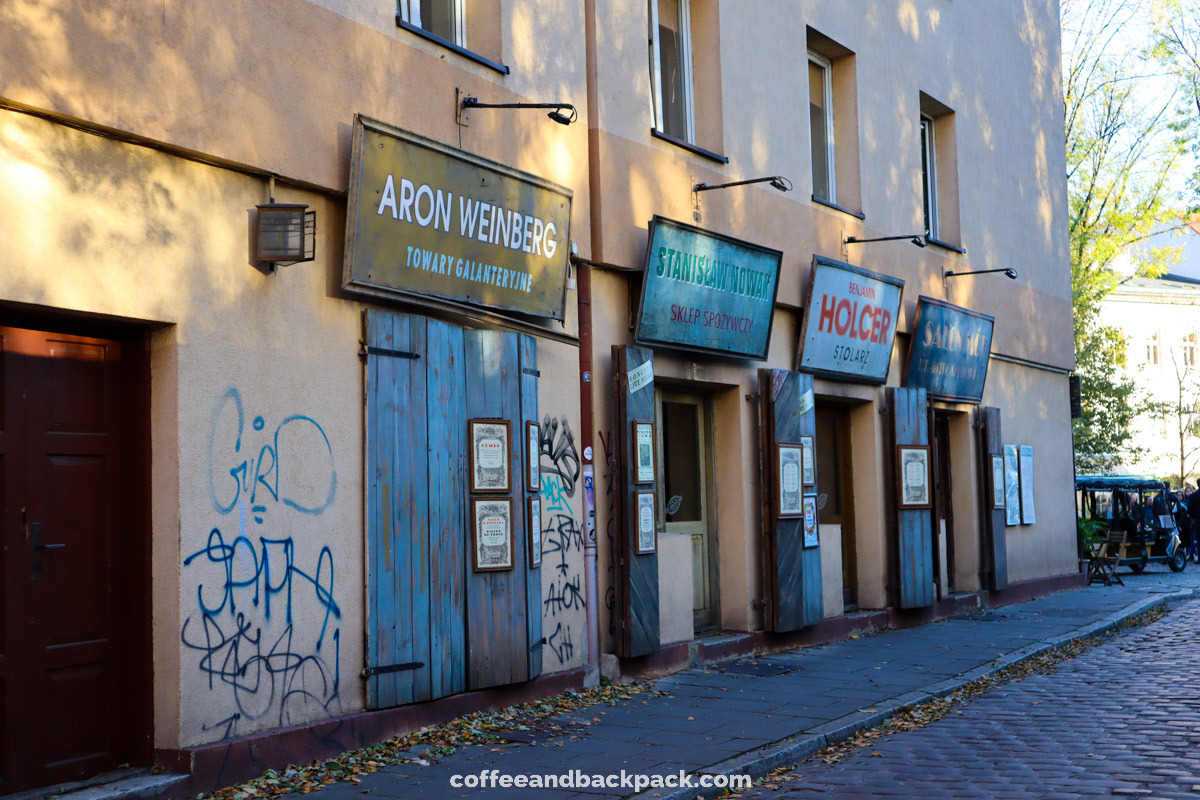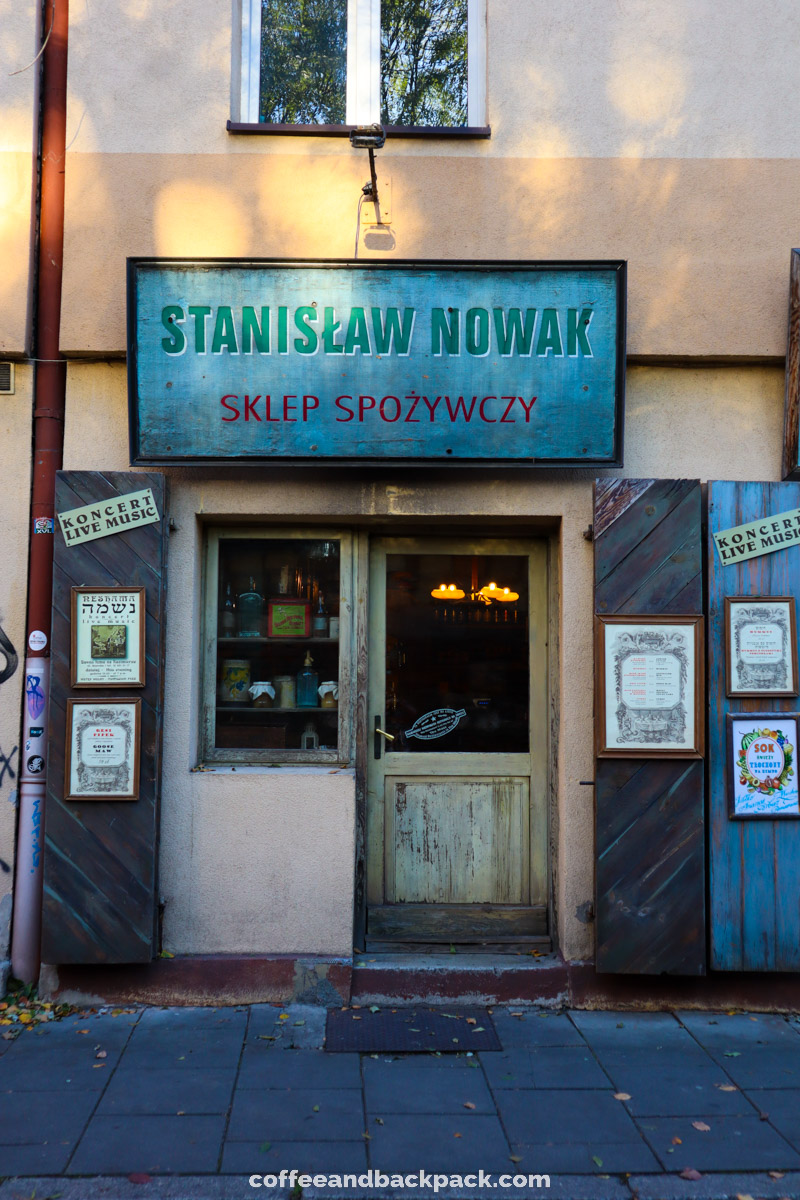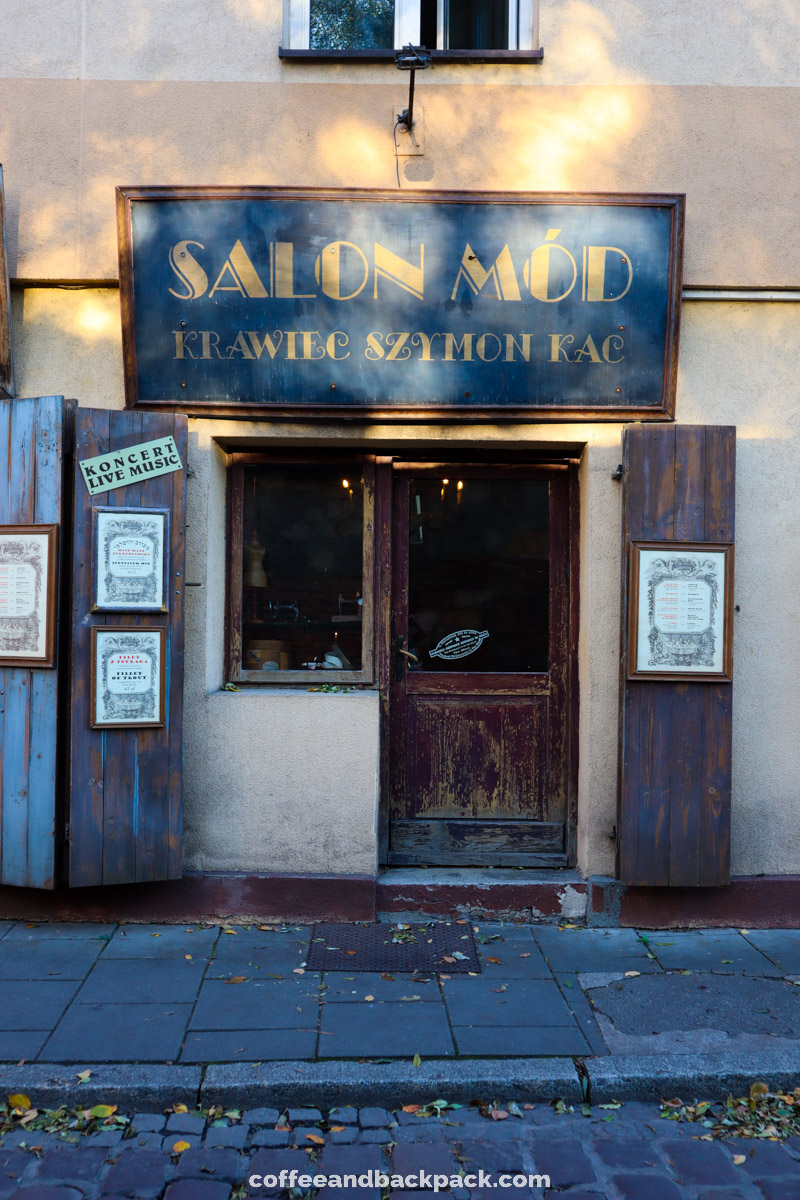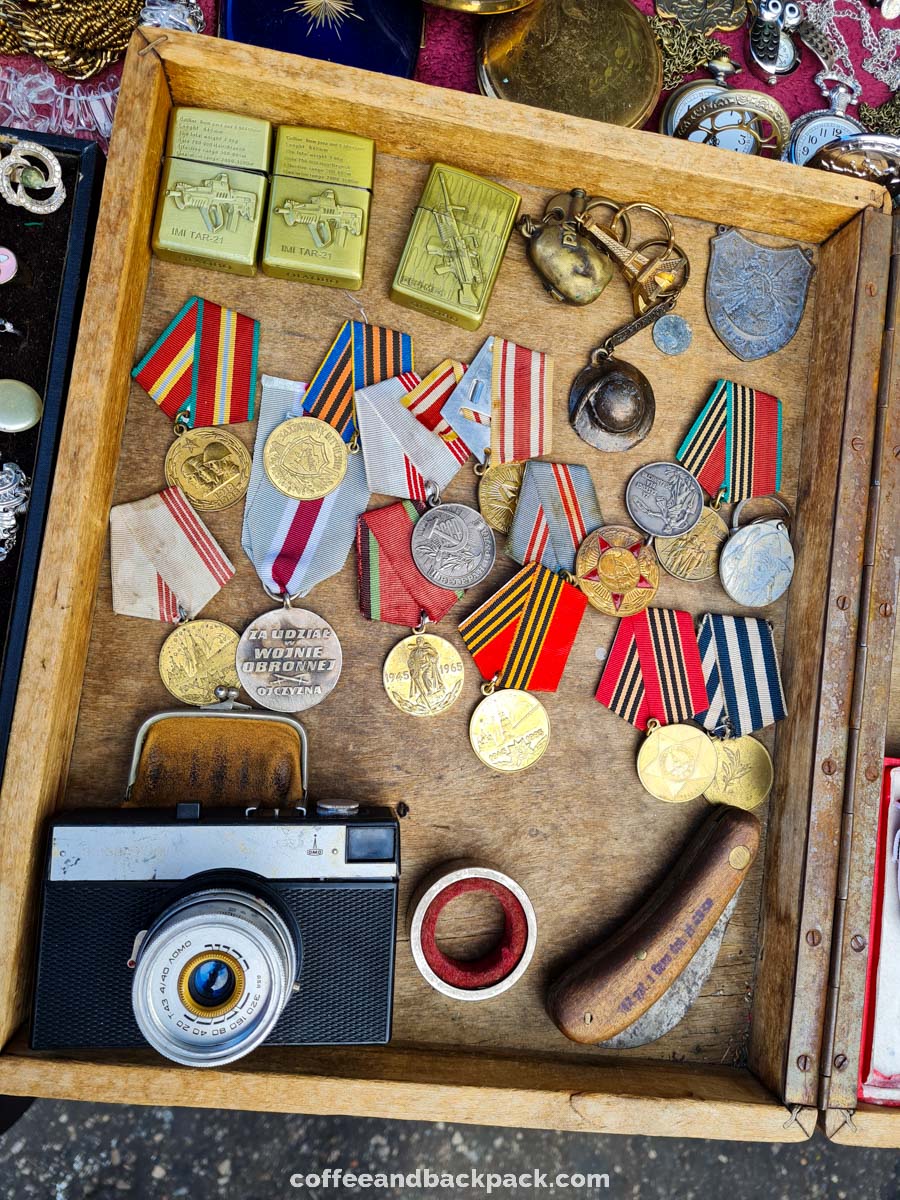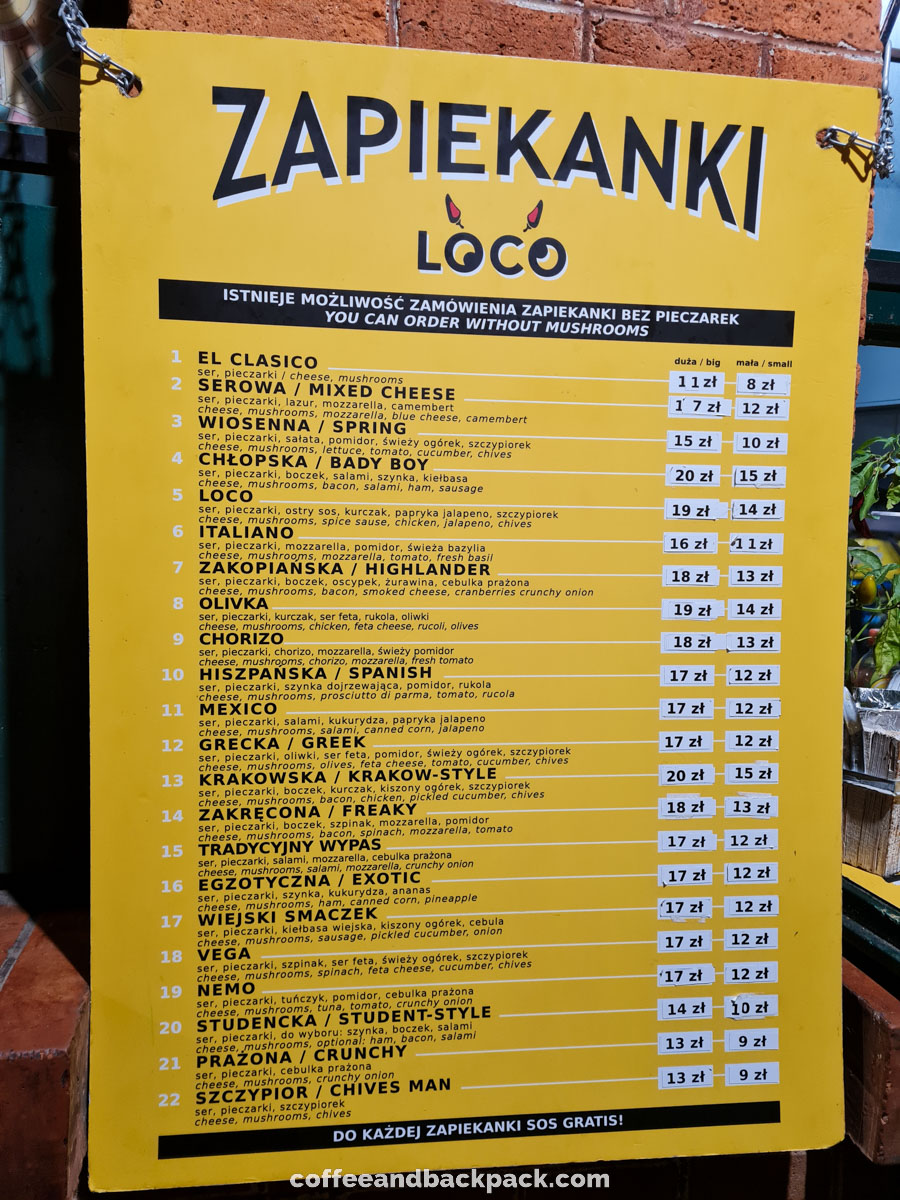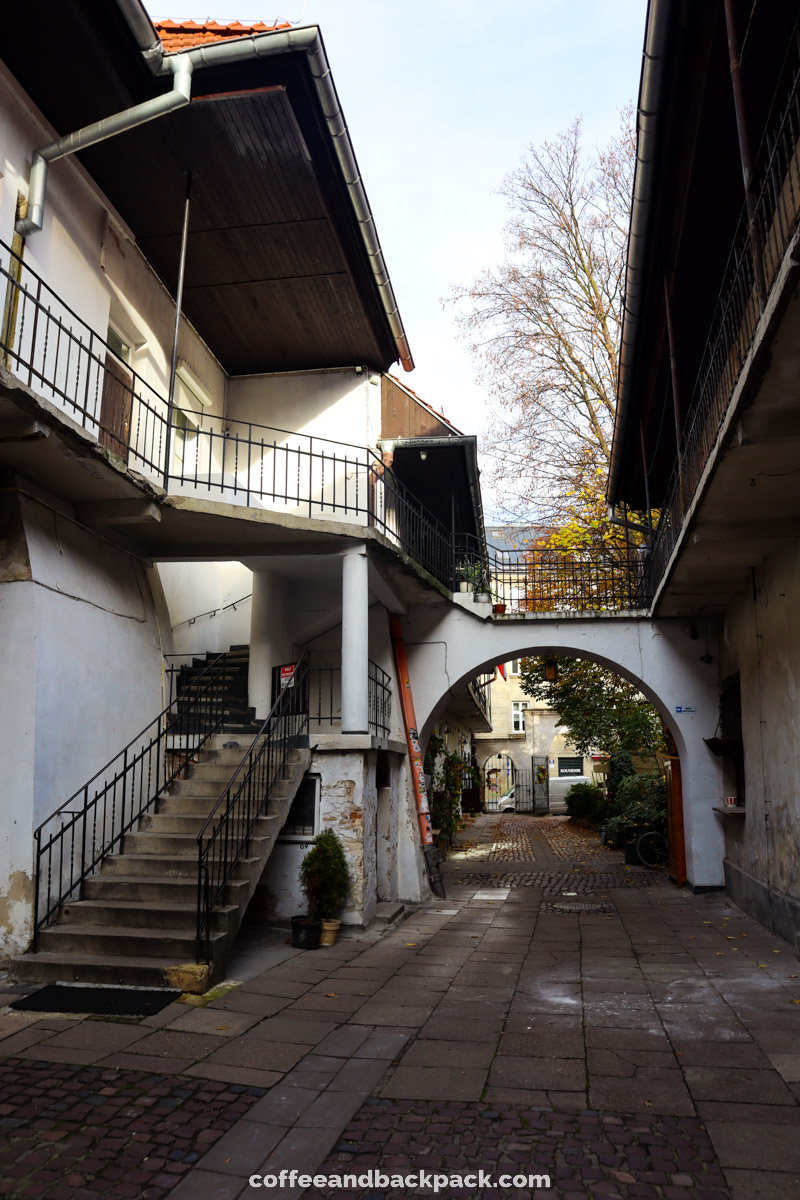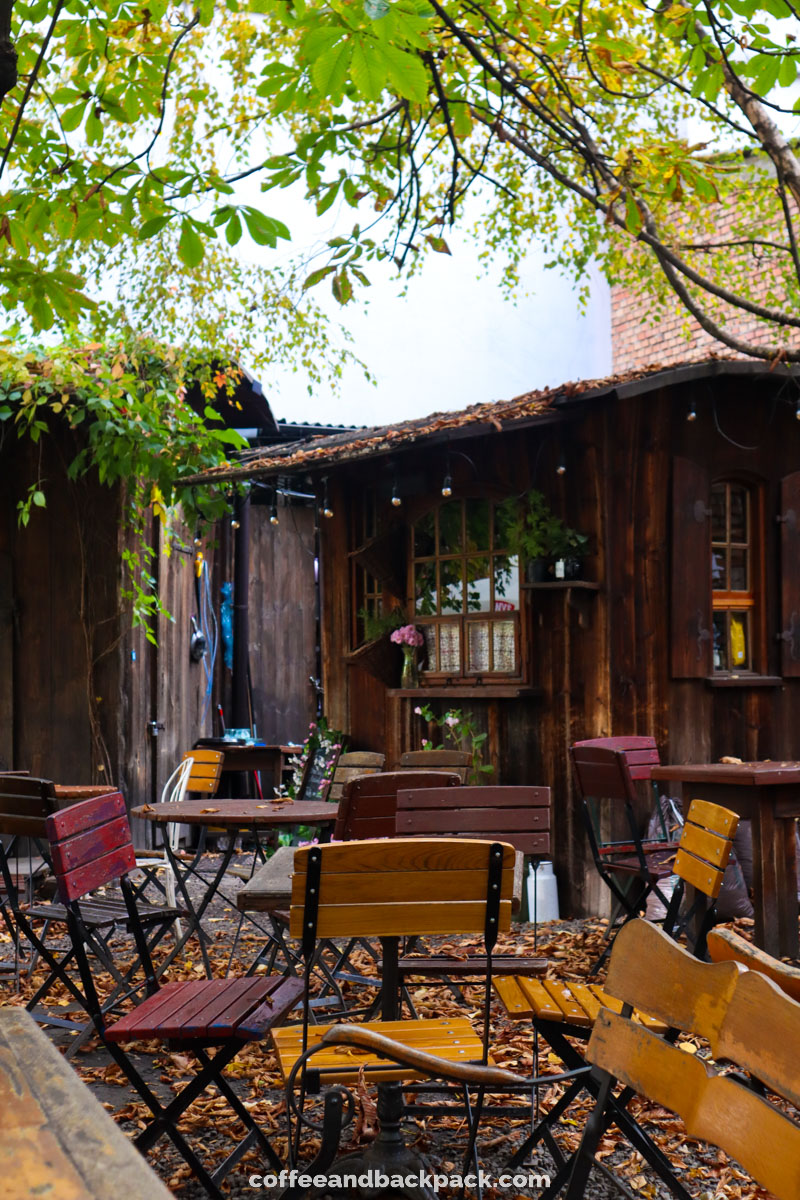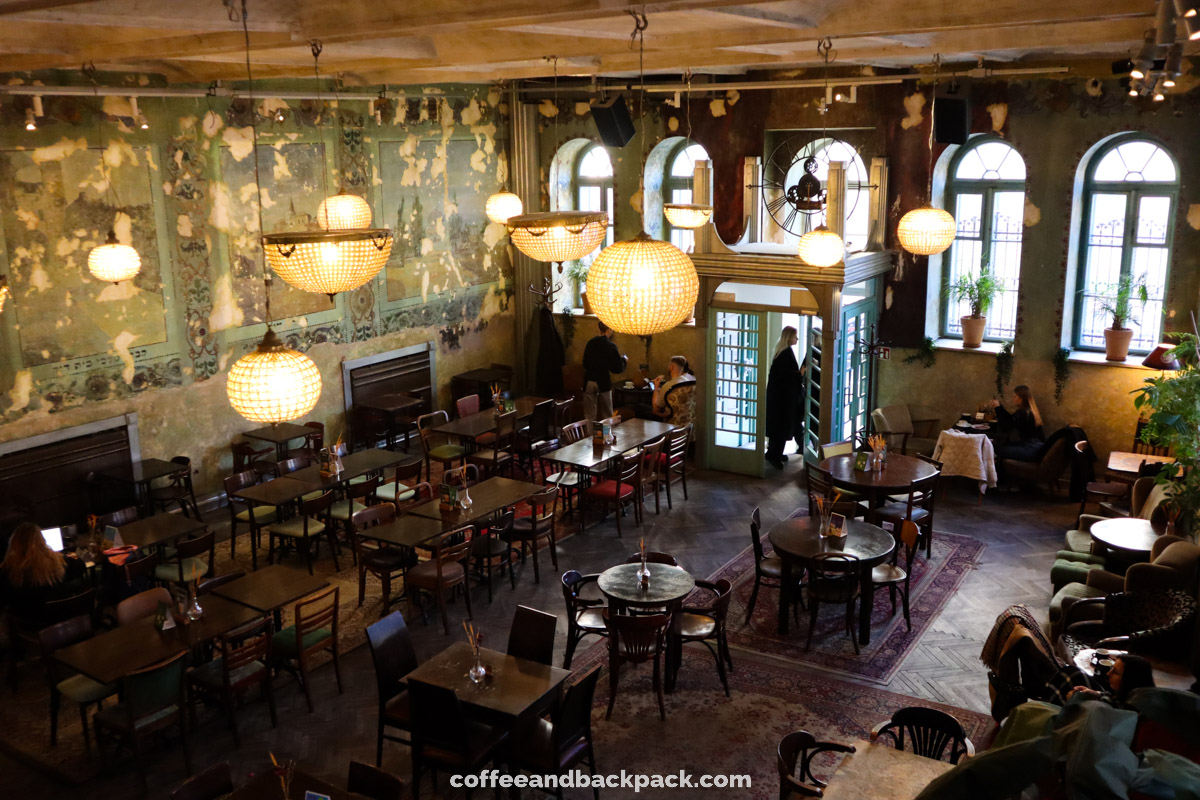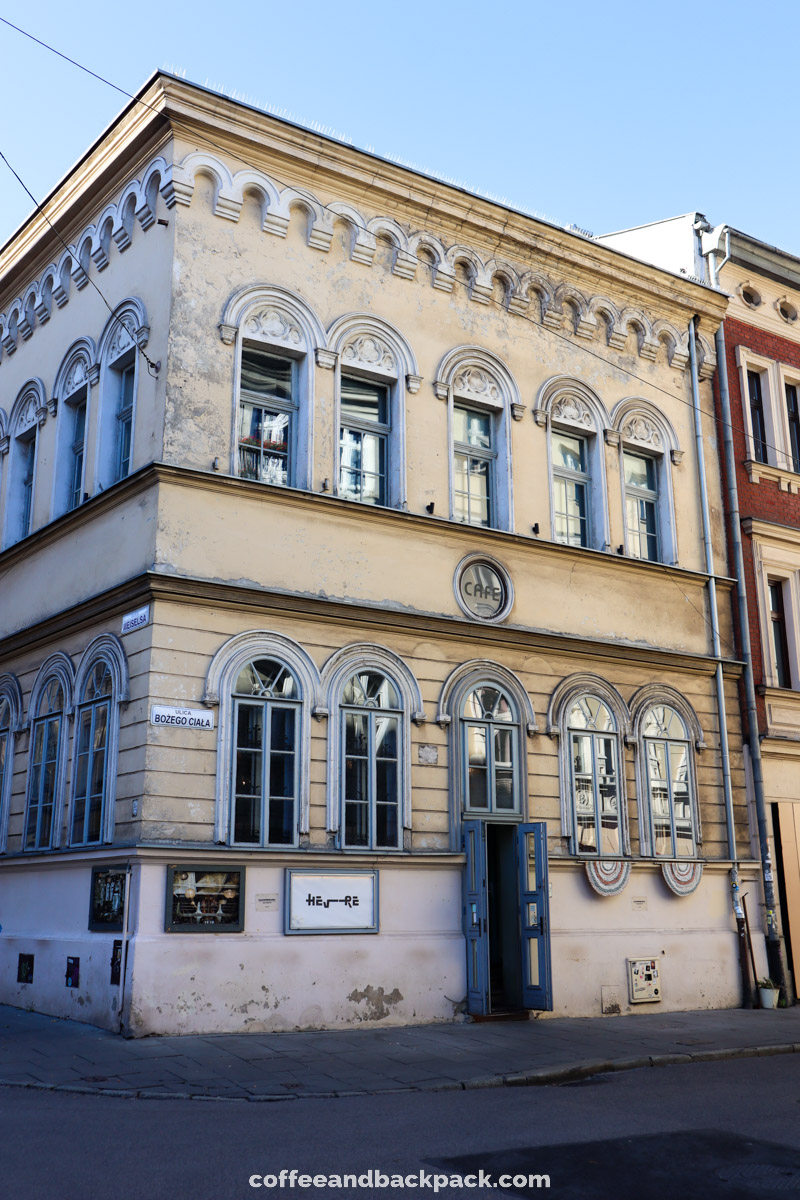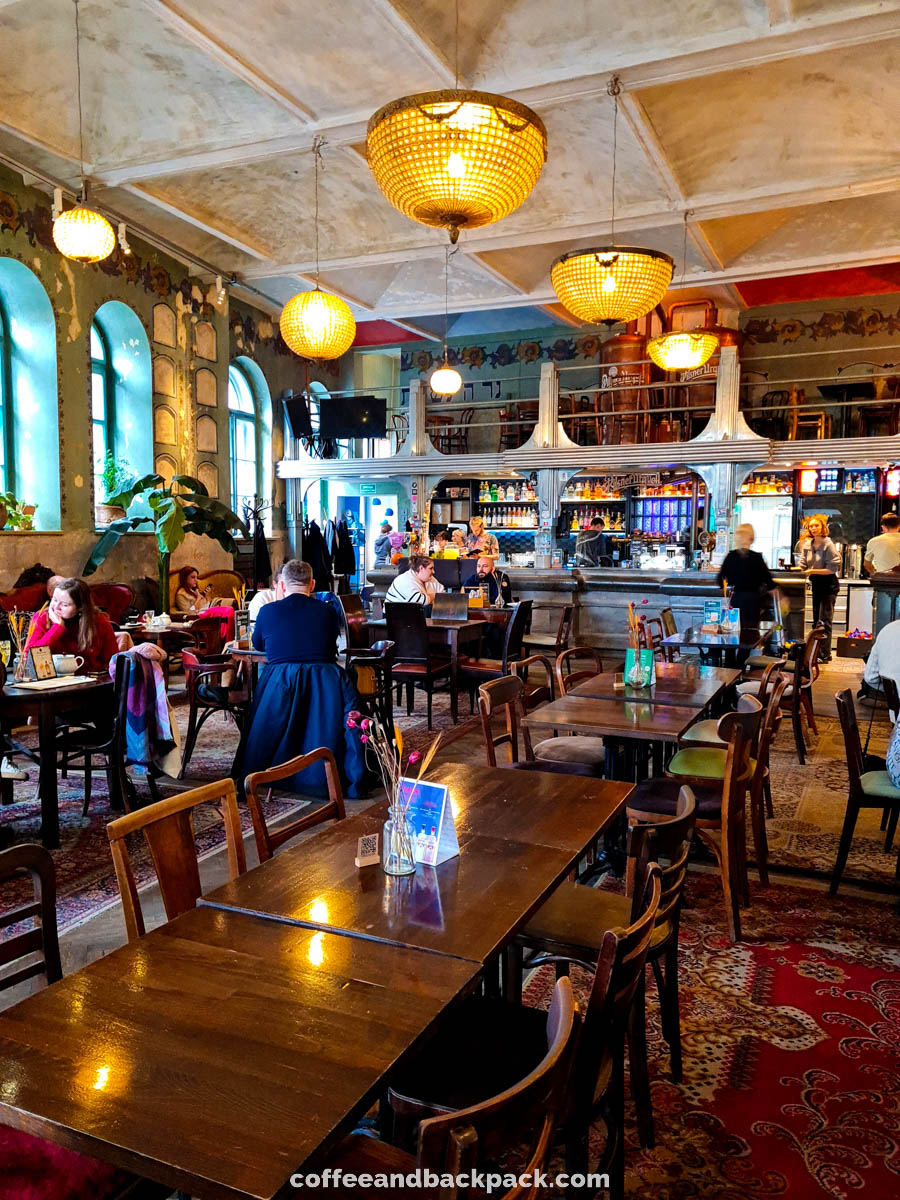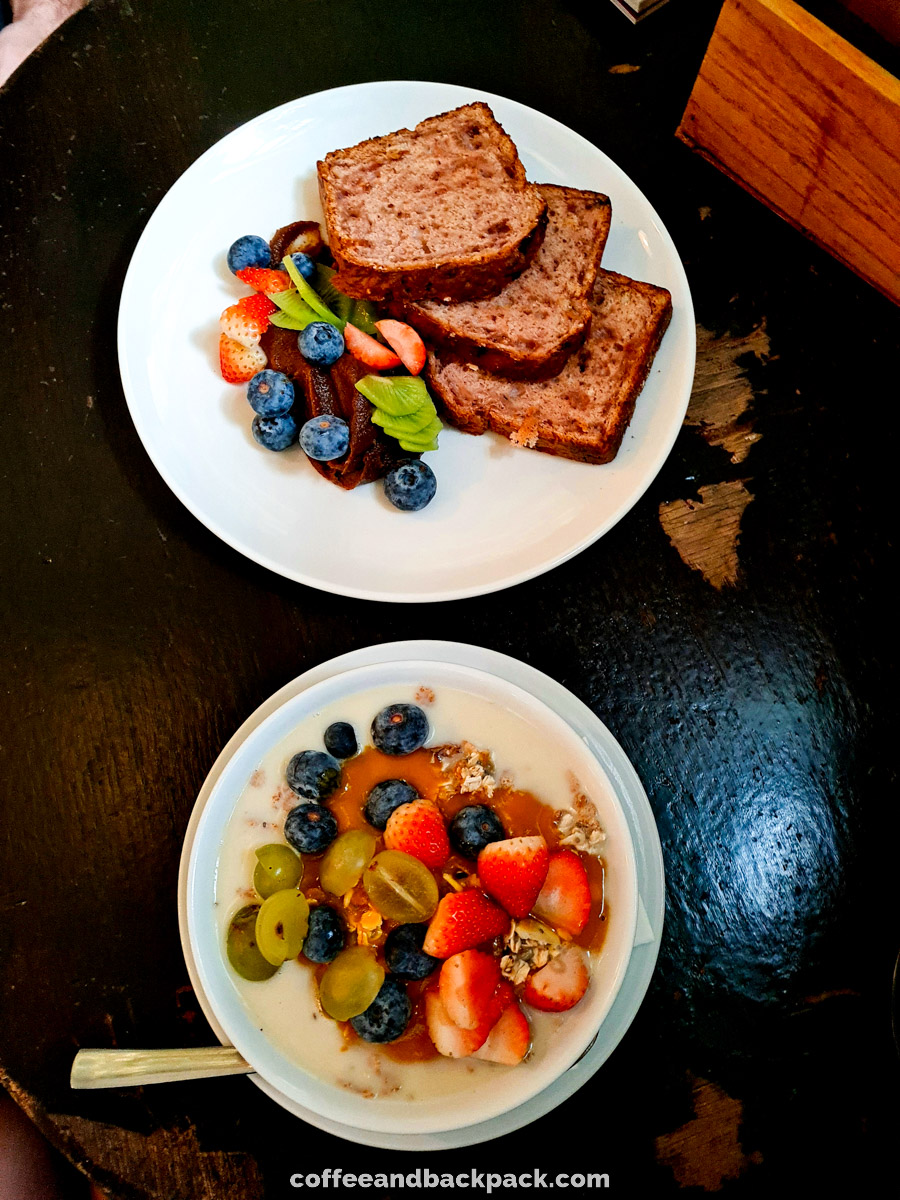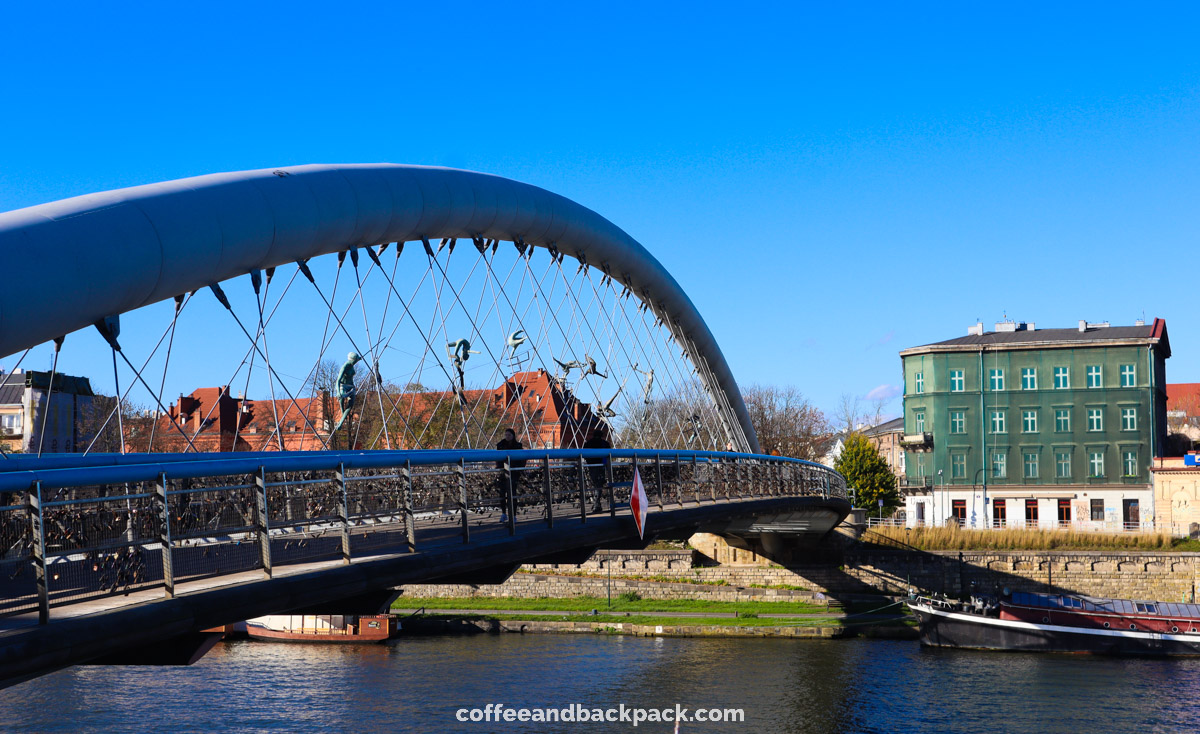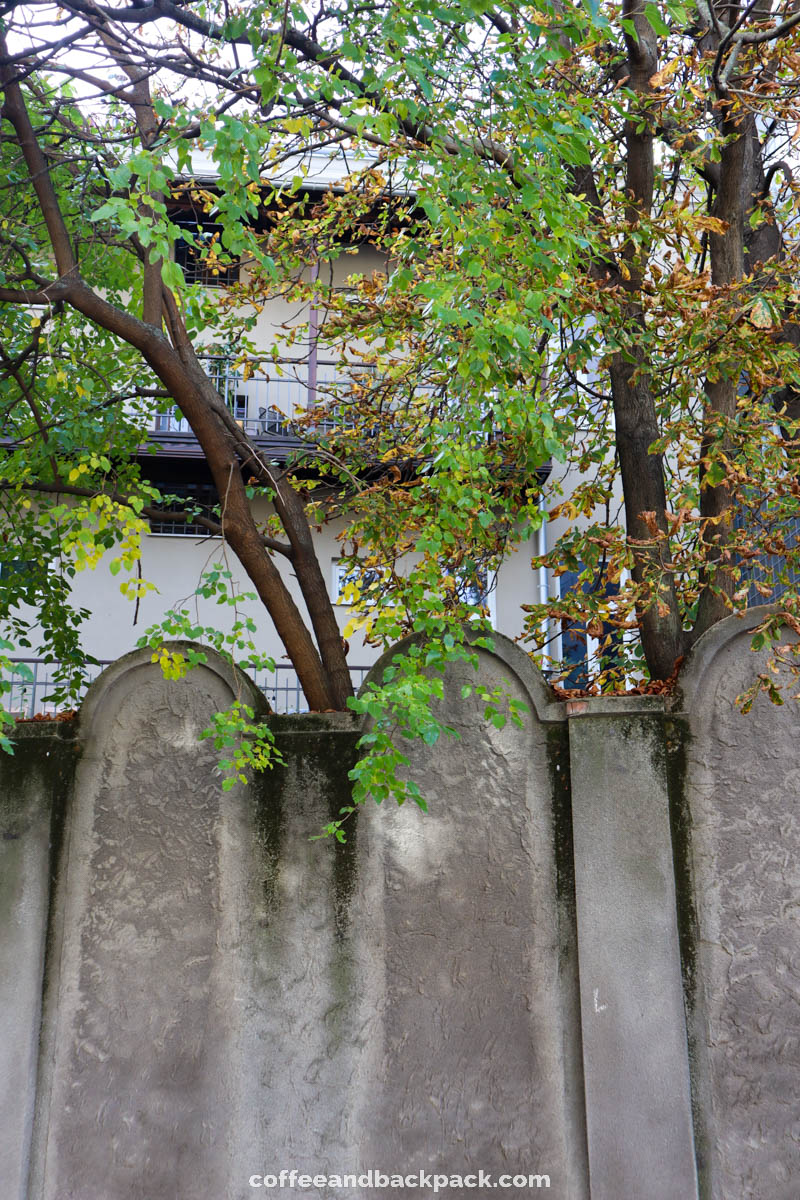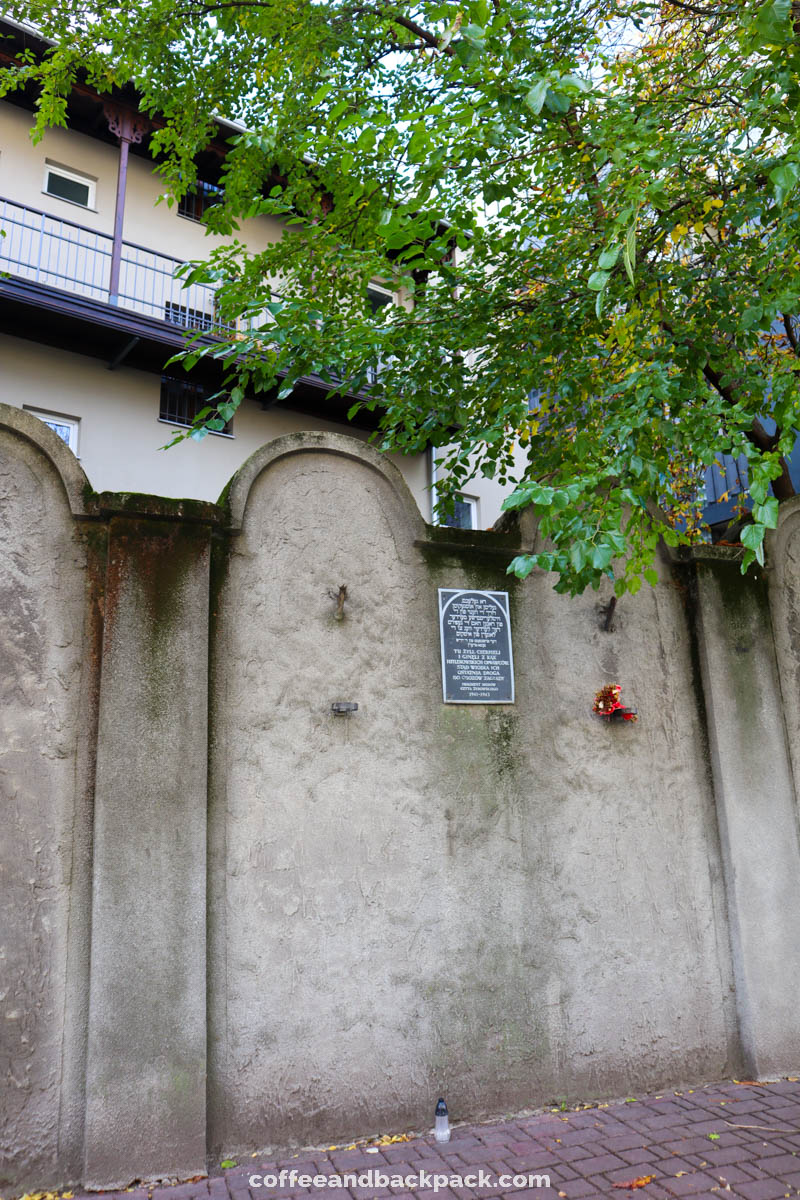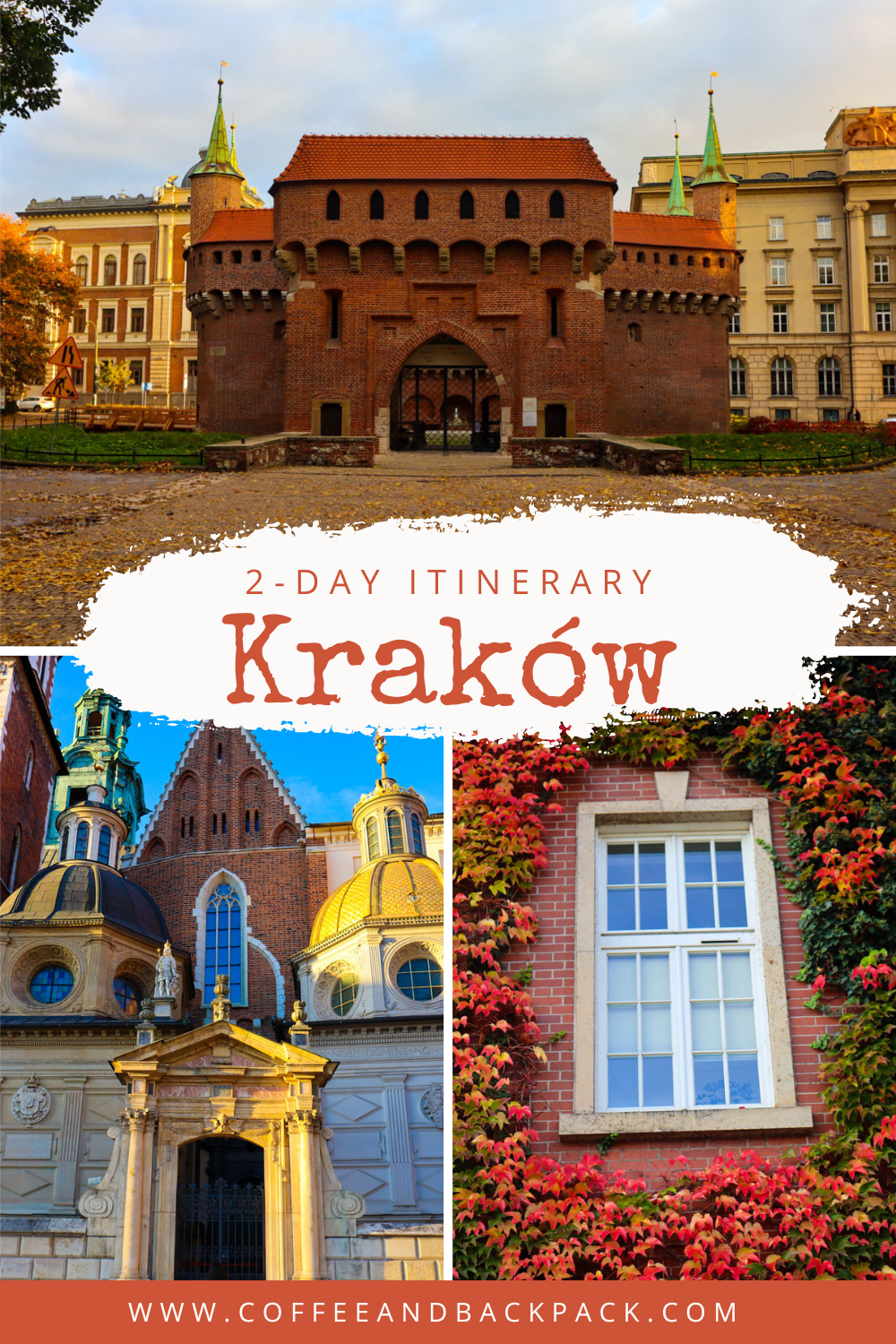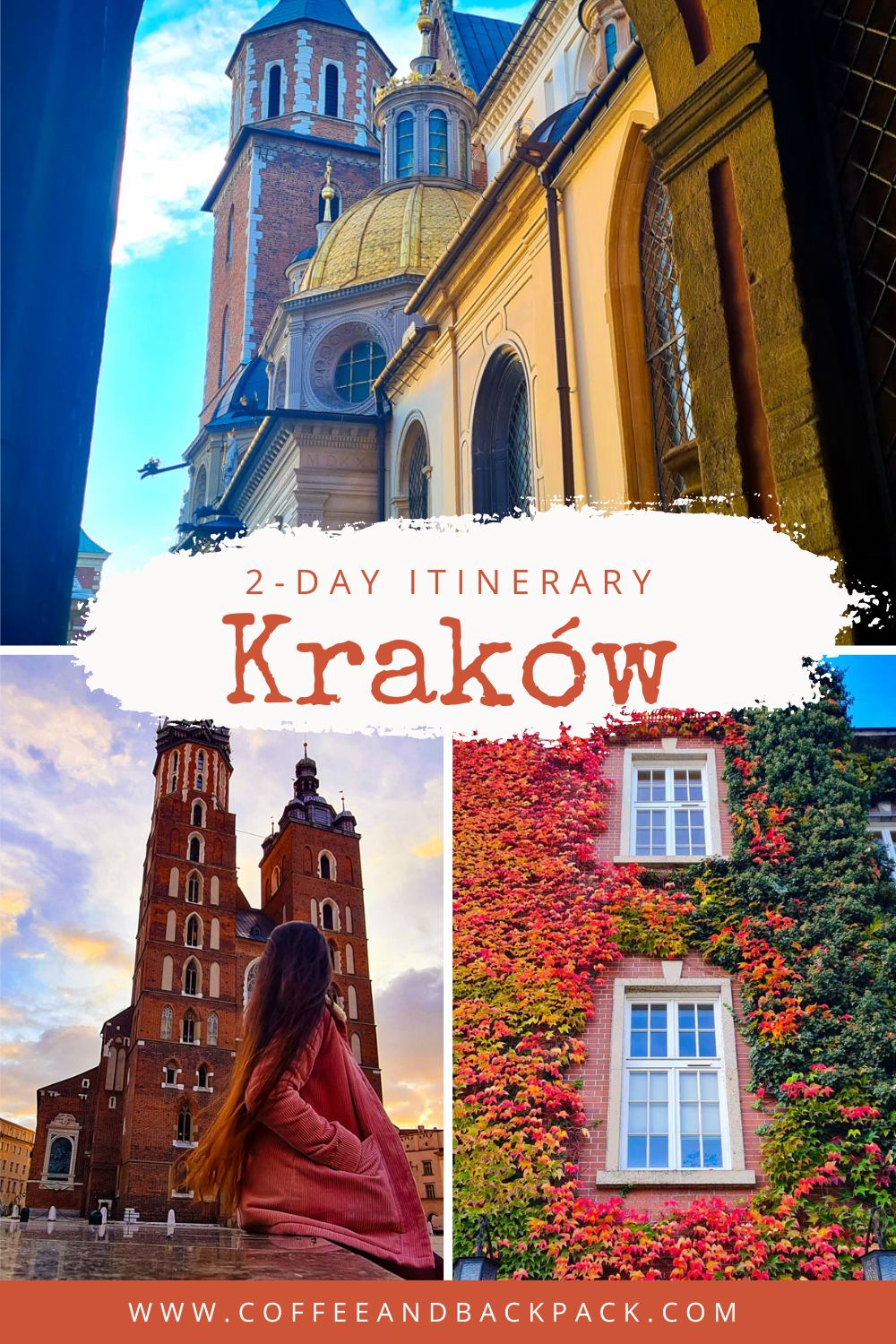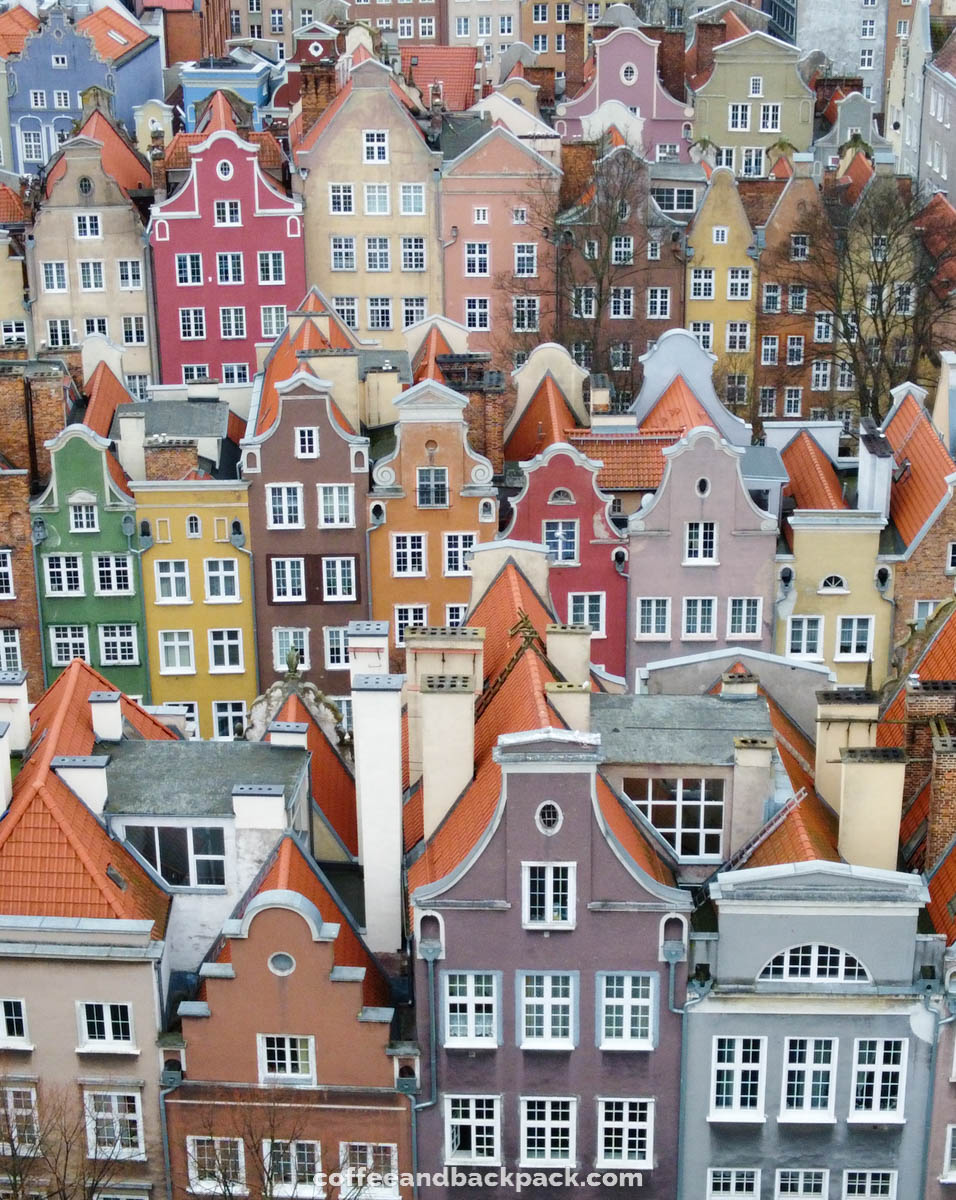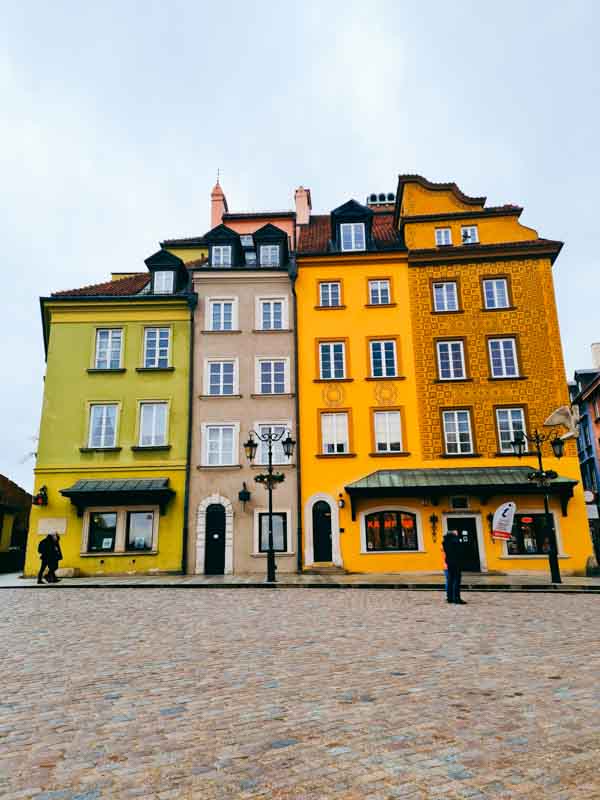Much like Prague or Edinburgh, Krakow is a marvel of Gothic architecture, steeped in medieval charm. From the Old Town Square, dominated by St Mary's Basilica, to the cobbled streets leading to the Jewish Quarter, via Wawel Castle, this former royal city is brimming with monuments and relics of a sometimes painful past. This itinerary will guide you through Krakow's must-sees and a few unusual places frequented by the locals, for a weekend of total immersion right in the heart of this historic city and the great Polish culture.
Tip
If you need recommendations for dining, cozy café, trendy bars or the best street food in Krakow, check out our article
Where to eat in KrakowDay 1 - Krakow old town & Wawel Castle and Cathedral
Start your day right in the center of Kraków, with a visit to Rynek Główny, the Old Town Square. Several points of interest can be found in this square, starting with St Mary's Basilica, the Cloth Hall and the Town Hall Tower.
We recommend an early morning visit, around 8 am, to fully appreciate its beauty bathed in the first rays of sunlight. At this hour, the square is devoid of locals, shopkeepers, tourists, and school groups, offering an unobstructed view of the beating heart of Kraków, Rynek Główny. Given its bustling nature during the day, experiencing it in the tranquility of the morning enhances the overall charm (at least in our opinion!).
Since most of the attractions in the Old Town open at 10am, use this as an opportunity to enjoy a tasty breakfast in a cozy café. We recommend
Camelot café. This pretty café with its vintage decor opens at 9am every day and is located just a few steps from the Old Town square. Their Mocha made with real thick chocolate is to die for!
At the stroke of 10am, make your way to the Cloth Hall (Sukiennice). This jewel of Renaissance architecture stands right in the middle of the old town square. It is not only the city's oldest shopping center but also one of its main historical monuments.
The Hall was built in the 13th century and rebuilt in the 16th century after a devastating fire. Back then, this covered market was used for merchants from outside the city. Today, it is used pretty much exclusively for souvenir shops.
You may notice a knife hanging under the archway of the central entrance, facing St Mary’s Basilica. This is an old warning to thieves operating in the market hall. The penalty for any thief was to have an ear cut off. This knife is a replica of the original, which was ironically stolen.
Tip
The Krakow City Museum, known as the
Rynek Underground, is located below the Cloth Hall. The entrance is on the ground floor, facing St Mary's Basilica.
Make sure to visit St Mary's Basilica, one of Krakow's most emblematic monuments. Its Gothic architecture with two asymmetrical towers makes it unique, and the basilica's interior rivals its exterior in beauty. There is no plan of the basilica left to explain why one tower is higher than the other. Legend has it that the construction of the basilica's towers was entrusted to two brothers. The younger brother murdered his brother to make sure he could build the tallest tower, but overcome with remorse, he pierced his heart with a knife (symbolically the one hanging in the cloth hall) and threw himself from the top of the tallest tower.
The basilica is open to visitors from 11.30am to 6pm Monday to Saturday, and from 2pm to 6pm on Sundays. Admission costs PLN 15 (around €3.50). The interior of the basilica is breathtaking, with its midnight-blue ceiling adorned with golden stars, its many stained-glass windows and its imposing organ.
Every hour of the day and night, a trumpeter plays the same melody three times from the top of the basilica's two towers. You'll be able to see him waving to passers-by from the top of the tower after each performance. These trumpeters work 24-hour shifts, and are all firefighters, a very noble profession for the city of Krakow, whose patron saint is none other than Saint Florian, the patron saint of firefighters.
After visiting the Basilica, set off on a tour of the Town Hall tower. Located right in the center of the Old Town Square, the Town Hall was once an imposing building, of which only the tower remains today. A narrow stone staircase provides access to the top of the tower for a view of the center of Krakow. Unfortunately, there is no observation platform, so the view is best enjoyed through large windows.
Tip
Visits to the Town Hall Tower are free every Monday from 11am.
The visit to Rynek Główny ends with the Church of St Wojciech. This is the oldest building in the Old Town Square. The building has a sunken entrance accessible via a staircase. Over the years, the square has been raised and is now 3 meters above its former level.
Before leaving Rynek Główny, make sure to enjoy a coffee break on the terrace of
Café Szał. This café located on the roof of the Cloth Hall offers an incredible view of the Old Town Square and St Mary's Basilica. The café opens its doors at 10am. Access is via the museum entrance next to the tourist office, facing St Mary’s Basilica.
Continue along Floriańska Street, connecting St. Mary's Basilica to the city walls and the Barbican. Kraków, once encircled by fortifications, saw these structures dismantled in the 19th century, giving way to gardens that now envelop the old town. Trees and lines of public benches create pleasant green corridors, offering a delightful stroll to another section of the old town. Here, you'll find locals walking their dogs or jogging. The Barbican, once a gateway to the old town, stood as the passage before crossing the ramparts that once embraced the city.
Our journey proceeds with a visit to the Collegium Maius, Krakow's oldest university, which remains active and welcomes visitors. Explore the museum or simply bask in the beauty of the inner courtyard, surrounded by the red-brick Gothic architecture. This esteemed institution has hosted notable figures like the astronomer Copernicus and Pope John Paul II. Don't miss the delightful café in the basement.
Tip
Hungry? Before leaving the old town, stop for lunch at
Smak Bar, a traditional Polish restaurant with a cozy atmosphere and serving indulgent Polish dishes at very affordable prices. We recommend trying the Pierogis, a Polish dumpling filled with meat or vegetables, and the potato pancakes served with a mushroom sauce.
Proceed along Grodzka Street to reach Wawel Hill and explore its numerous attractions in the afternoon. This bustling street is lined with charming cafés and souvenir shops. Be sure not to overlook the Baroque church of St. Peter and Paul, adorned with statues at its entrance.
The ascent to Wawel Hill takes approximately 15 minutes. We suggest beginning by strolling to the banks of the Vistula River to encounter the Wawel Dragon. This mythical creature is the emblem of Krakow, and legend has it that it once dwelled in a cave beneath Wawel Hill, instilling fear in the city's residents. Today, a statue represents the dragon, spouting flames every 3-5 minutes.
Then climb the stairs that will take you into the grounds of Wawel Castle. Overlooking the city and the Vistula from the top of this limestone hill, Wawel is Krakow's historic center of power, a reminder of its past as a royal city.
Access to the castle grounds is free. There are several landmarks on the hill, including the statue of Pope John Paul II, the Princely Residence and Wawel Cathedral.
Wawel Cathedral stands as a Polish national shrine, serving as the final resting place for national heroes. The cathedral's architecture is notably unique, showcasing a fascinating blend of styles. From Gothic to Baroque and Renaissance influences, the cathedral is akin to a jigsaw puzzle, each piece representing different eras and architectural styles. Explore its chapels and decorations and witness the rich layers added over the centuries.
The castle, much like the rest of the city, stands remarkably well-preserved, having escaped the ravages of the Second World War bombardments. Krakow, serving as the seat of Poland's general government during the Nazi occupation, witnessed the establishment of Hans Frank's government headquarters in Wawel Castle. The yellow building at the heart of the castle, dating back to 1942, bears the historical weight of the Nazi occupation.
We recommend visiting the castle at the end of the day to see the last rays of sunlight illuminate the red facades and golden roofs of the cathedral. Wawel Hill also offers a great vantage point from which to watch the sun set over Krakow and the Vistula river.
To conclude your initial day in Kraków, return to the Old Town for a medieval-themed dinner at
Tawerna Wilczy Dół. This unique dining spot is situated in the Old Town's basement and inspired by the world of ‘The Witcher’, a book series by Polish author Andrzej Sapkowski.
Day 2 - Kazimierz, the Jewish quarter of Krakow
This second day in Krakow is dedicated to exploring the Kazimierz district, also known as Krakow's Jewish quarter. Named after King Kasimir, who is credited with founding this autonomous town, now integrated into the city of Krakow.
Steeped in history related to WWII, with remnants of the Ghetto and the factory of German entrepreneur Oskar Schindler, this district is also a hub for Krakow's street food, vintage clothing shops, and numerous trendy cafés and bars. It's a bohemian neighborhood offering a full day of immersive experiences.
Start your day with a delicious all-you-can-eat buffet breakfast at
Kolanko Nº 6. This charming restaurant in the heart of the Jewish Quarter has a beautiful courtyard and a very cozy interior. We loved the facade covered with plants. It serves all-you-can-eat buffet breakfasts for just PLN 38 (just under €9).
Start your visit to Kazimierz with the Old Synagogue (or Stara Synagogue).
Dating from the 15th century, it is the oldest synagogue in the country. During the Second World War, it was used as a furniture warehouse by the Nazis. Since restored, it is now home to a museum showcasing Jewish history and culture in Krakow.
The synagogue overlooks a square surrounded by restaurants and the Remu synagogue. Not far away is the Austeria bookshop, located inside a former synagogue. Access is via a courtyard. As well as its unique setting, the bookshop sells a range of books for writing, as well as books about Krakow's Jewish community and its history. This community was estimated at around 70,000 people before the war, although these figures are not very reliable as many people of them had to change their identity to survive.
Continue towards the Once upon a time restaurant. The façade on the left of the restaurant has been restored to represent the shop fronts of days gone by, when Kasimierz lived to the rhythm of Jewish religious events.
Continue towards Plac Nowy. This is one of the main squares in the Kazimierz district. The round building at its center once housed a fish market. Today, the square is home to a second-hand goods market every day and a vintage clothes market every Sunday, as well as being a favorite place for locals to sample Polish street food.
We highly recommend having lunch on Plac Nowy to try one of the famous Zapiekanka, a toasted half-baguette topped with cheese, mushrooms and other accompaniments. There's a huge choice on Plac Nowy. The entire central building serves Zapiekanka of all kinds.
Just a few steps from Plac Nowy is the Schindler's List passage. This white building with a courtyard opening onto the street was once a place of residence for many Kazimierz residents. It was made famous by Steven Spielberg's film Schindler's List. If you have seen the film, you may recognise the white archway in the inner courtyard and the staircase leading to the first level of the building. Today, the building is still home to a couple of apartments on top of second-hand shops and cafés.
Tip
Are you a vintage shopping aficionado? Take a stroll down Rue Joźefa, home to a host of vintage clothing and jewelry shops.
It’s now time for a coffee break! We recommend chilling in a unique place in Krakow, and certainly one of our favorite places on our trip to Krakow (we went there several times!). Head to
café Hevre, housed in a former Jewish prayer room. The frescoes with Hebrew inscriptions bear witness to the building's past, and it has now been converted into a bar-restaurant. We recommend going there once during the day for a coffee, then again at night for a cocktail.
Exit the Kazimierz district and traverse the Bernatek Bridge, adorned with beautiful suspended works of art, to reach the Podgórze district, where the Krakow Ghetto used to be located. The Nazis selected this district due to its isolation between the hills and the river, coupled with its many industrial infrastructure. The Ghetto, encircled by an impervious wall, confined back then almost 16,000 Jewish workers against their will.
Next, visit the square where the memorial to Krakow's Jewish Ghetto is located. This square served as the backdrop for the harrowing selections depicted in Steven Spielberg's film. 65 chairs are displayed on this square, each chair symbolizes 1,000 lives lost during the Second World War, some of which are positioned near the tram stop. Adjacent to this area, you'll find the former pharmacy of Tadeusz Pankiewicz, one of the few Poles permitted to work within the Krakow Ghettos. Pankiewicz authored a book that stands as one of the rare testimonies to life, as well as the atrocities, within the Krakow Ghetto. Presently, the pharmacy functions as a museum.
Continue towards the remains of the Jewish Ghetto wall that once surrounded the Krakow Ghetto. Nothing remains of these walls today apart from these few sections along the pavement. The shape of the wall is reminiscent of the headstones in Jewish cemeteries. It is said that the Nazis deliberately reproduced these shapes on the walls of the Ghetto as if to announce the grim future of the Ghetto's inhabitants.
A few steps from the remains of the Ghetto wall is Oskar Schindler's factory which was located outside the Ghetto. The story of this Krakow-based German entrepreneur was made famous by Steven Spielberg's film. Oskar Schindler, a member of the Nazi party and close to its leaders in Krakow, is said to have used his factory to employ and save nearly 1,200 people from certain death in the concentration camps. Today, the factory is home to a museum on the Second World War and the Krakow Ghetto.
After an entire day spent visiting Kazimierz and Podgórze, which we have to admit can be emotionally challenging, we suggest a lighter activity to conclude your second day in Kraków.
Jump on tram number 22 or grab a taxi to reach
Krakow's Arcade Museum. Open every day, this museum is home to an impressive collection of vintage arcade games, pinball machines and other attractions that are becoming increasingly rare. Admission costs PLN 45 per person (around €10). An affordable option for a lot of fun!
To round off the day, head to the
Hala Forum. This is a former hotel on the banks of the Vistula river, whose ground floor has been converted into a number of trendy bars and restaurants popular with locals. Settle into one of the many lounges and enjoy a drink and dinner with a view of Wawel Castle by night.
Our two-day exploration of Krakow concludes here. However, if you have additional time, we highly recommend a visit to the Auschwitz and Auschwitz-Birkenau camps. While emotionally challenging, it provides valuable insights into the tragic history of the Jewish community and the Nazis' use of occupied Poland for heinous acts. As the camps are about 3 kilometers apart from one another and an hour's drive away from Krakow, we suggest opting for a tour operator who can facilitate transportation and guide you through both camps. Having a guide enhances the experience, offering detailed information about the construction, operation, and ultimate destruction of these camps by the Nazis themselves at the war's end.
Like this article? Save it on Pinterest!
